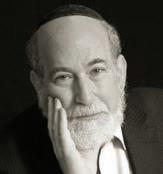KOSHER SCOUTS
Family Cub Pack 210 makes scouting accessible to Jewish families


CAMPS


Family Cub Pack 210 makes scouting accessible to Jewish families



Hundreds of asylum seekers arrive daily at the International Rescue Committee (IRC) Welcome Center in Phoenix wearing only hoodies and sweatshirts to stay warm.
They are on their way from Phoenix to colder climates to be resettled with family, friends and other sponsors while they await asylum hearings.
They need heavy coats and winter gear and that’s where the Jewish communities of Sedona, Verde Valley and Flagstaff have stepped in.
Learning of the need, the Jewish Community Relations Council of Greater Phoenix turned to neighbors to the north for coats and other winter clothing available for donation.
“Thankfully, they took up the charge and were able to work together with their communities to be able to run with this and donate large capacities of winter coats for the asylum seekers,” said Paul Rockower, executive director of JCRC, which has worked with the IRC Welcome Center before. “We don’t have winter coats here, which is why we reached out to places where they get more wintry weather.”
Gloria Brown, chair of the social action committee of the Jewish Community of Sedona and the Verde Valley (JCSVV), organized a winter coat collection along with the Sedona Community Food Bank and Old Town Mission in Cottonwood.
Brown said that about 140 winter coats and lighter weight jackets and an abundance of sweaters, scarves, socks, hats and gloves were collected by all the local organizations.
In Flagstaff, Congregation
Rabbi Julie Kozlow said she’s broken out of the traditional rabbinical box and is creating a more spiritually productive Jewish congregation. She said the new group, called “The Community,” founded in Prescott, is liberating for herself as a rabbi and her 25-families strong congregation.

She said she knows she’s not alone in this and appears to be part of a movement away from the more traditional ways of “doing Jewish.”
“There are a handful of rabbis right now creating alternative ways of doing Jewish, and I’m one of them,” she said.
“It’s my belief that the construct we have for normative synagogue life is not built for the future,” the 65-year-old mother of two grown children said.
“This is more about living in the rhythm of Jewish life and being part of it.”
Kozlow said, “The Community emphasizes the sacred connections between human beings and doesn’t define itself as Reform, Conservative or Orthodox. It’s just Jewish. It’s soulful. It’s about souls coming together to uplift our personal lives and our world.”
The Community, which serves the unaffiliated Jews of the quad city area and beyond – some as near and far away as Phoenix and the East Coast – has no building of their own, mostly because it takes “too much time, money and energy to sustain a place,” Kozlow said.
Launched Jan. 1, The Community rents space from the local Unitarian Church and the chapel at Embry–Riddle Aeronautical University in Prescott.


Valley residents will get the chance to see “Holocaust by Bullets 10 Years of Investigation” during its run at Arizona State University’s Hayden Library from Feb. 27 through April 17. See page 8.
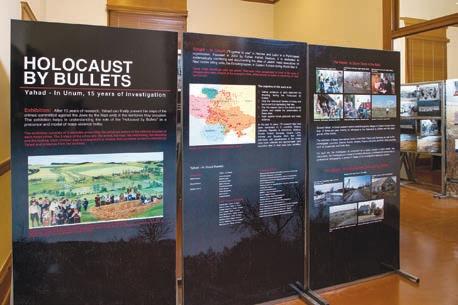
Lev Shalom hauled in over 100 coats, an impressive drive considering the synagogue has only 40 members. “We did a good job,” said Thea Karlin, temple coordinator. “We had one member who held on to jackets that were her children’s and their children have children who have jackets. They were beautiful, in wonderful condition.”
In Sedona, huge bags of clothing piled up in Brown’s garage before they were picked up and driven to Phoenix by Christy Bishop of Gathering Humanity.
“We want to express gratitude to all who donated items to us directly and to the coat drive of the Sedona Community Food Bank,” said Brown, whose synagogue has over 200 members. Last year, more than 300 winter coats were collected by JCSVV for causes closer to home. Brown worried that the community would be tapped out this year, but there was still more to give, she said.
Ted Kohan, past chair of the JCSVV social action committee, helped Brown with the drive. “We have a good partnership with many of the organizations in the area. So, it’s just another step in the right direction of helping people not only locally here in the Verde Valley but throughout Arizona and hopefully throughout the country.”
Speaking on behalf of the Flagstaff Jewish community, Karlin said, “We were so thrilled to reach out to help other people have a warmer start. We love being there for people, no matter what their backgrounds are. We’re staying warm in each other’s hearts by working together.”
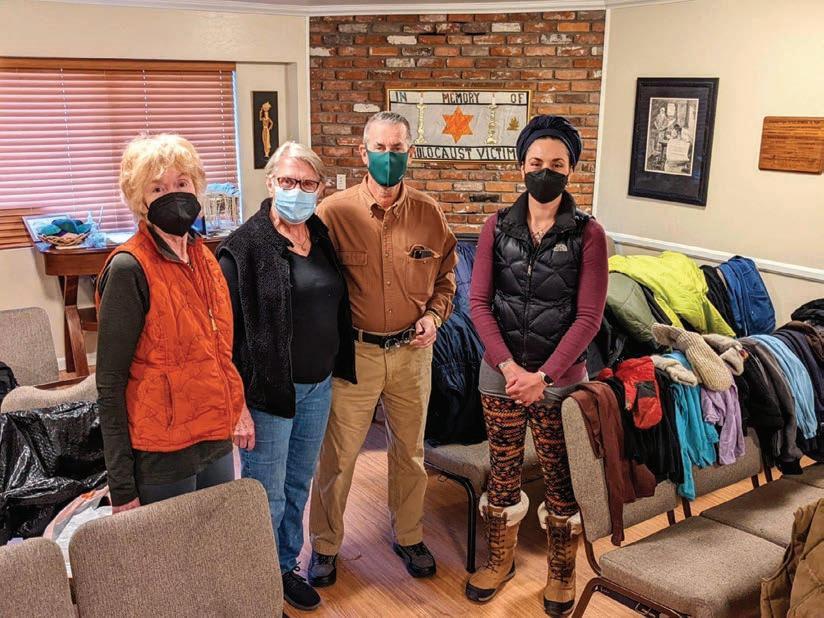
The IRC Welcome Center serves up to 250 people a day, offering them showers and a change of clothing, meals, health care, legal aid and a place to sleep. It’s a welcoming waystation for migrants from
scores of countries seeking asylum after they have been released from the U.S. Border Patrol or U.S. Immigration and Customs Enforcement.
“They pretty much have the clothes on their backs,” Brown said. “They came with whatever they wore. They don’t leave these places with big luggage to carry.”
Brown said the completion of the hastily arranged drive coincided in January with the Torah portion Mishpatim, for which she gave a drash (interpretation) over Zoom for her hometown synagogue in New Jersey. “It was completed in the week of Mishpatim where we honor and say we must take care of the strangers that we meet. It’s all in there.”
Anna Keating works with the Welcome Center as a representative of Interfaith Asylum Refugee Volunteers. The organization was started by Barbara Lewkowitz of Beth El Congregation
in 2018. “This (Jewish community) drive was pretty impressive,” Keating said, “how they got as many coats and outerwear as they did. These people are going to arrive to their destination and face many difficulties, but at least, through everyone’s donation, being cold isn’t going to be one of them.”
“I’m very proud of our social action team, which answered the call for warm winter clothes,” said Rabbi Alicia Magal of JCSVV. “I think we all have to look out for each other and we have to extend our compassion beyond our community borders, beyond our intimate relationships because it’s easy to help a neighbor and it’s easy to help someone that you know personally. But when you go beyond that and you help people you don’t even know; I think that that is an added layer of human compassion.” JN
Ellen Braunstein is a freelance writer based in Chicago
January 7
January 18
February 4
February 18
March 4
March 18
March 25
April 1
April 8
May 6
May 20
June 10
July 8
July 29
August 5
August 19*
September 9
September 16
September 23
October 7
October 14**
October 21
October 28
November 4
November 18
December 2
December 16
a.m.-12:30 p.m. Friday
DEADLINES
EDITORIAL: Noon, Tuesday 9 days prior to publication
ADVERTISING: 11 a.m., Friday 3 days prior to publication
PUBLISHER Jewish Community Foundation of Greater Phoenix

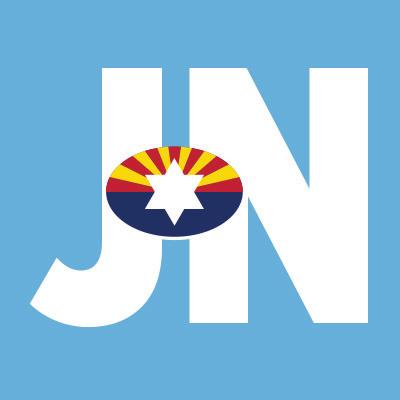
GENERAL MANAGER Rich Solomon | 602.639.5861 rsolomon@jewishaz.com
MANAGING EDITOR
Mala Blomquist | 602.639.5855 mblomquist@jewishaz.com
ADVERTISING SALES CONSULTANT Jodi Lipson | 602.639.5866 jlipson@jewishaz.com


SUBSCRIPTIONS 602.870.9470 x 1 subscriptions@jewishaz.com
GRAPHIC DESIGNER Frank Wagner | 410.902.2300 ads_phoenixjn@midatlanticmedia.com
Jaime Roberts, Publisher | 2013-2016
Florence Newmark Eckstein, Publisher | 1981-2013
Cecil Newmark, Publisher | 1961-1981
Pearl Newmark, Editor | 1961-1981
M.B. Goldman, Jr., Founder | 1948-1961
PROUD MEMBER OF

At least one congregant of The Community, Dr. Joy Fuhrman, says she thinks Kozlow is headed in the right direction.
Describing Rabbi Kozlow as “the most enlightened soul I’ve ever met,” Fuhrman, a resident of Prescott, said, “she brings such a joy to all connected with her; such excitement in Judaism for myself, for adults, for children and I feel blessed to know her.”
In Fuhrman’s mind, Kozlow is not diverging from traditional Judaism but, on the contrary, is “very involved in sharing Jewish knowledge and teaching it to others.”
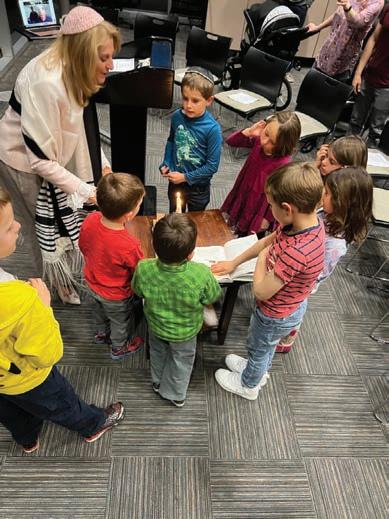
Kozlow believes hers is a different approach to an ancient belief system that tends to bind the hands of clergy and isn’t necessarily welcoming or tolerant of female rabbis or new processes.
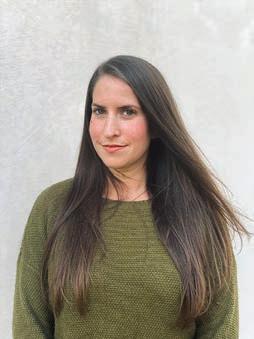
“I don’t believe after 15 years in the normative rabbinate that this structure of institutions is spiritually productive,” she said, adding that her shul will never be overseen by “a board or a boardroom.”
“I’m the spiritual board that I’m creating for the unaffiliated Jews in Arizona,” she continues.

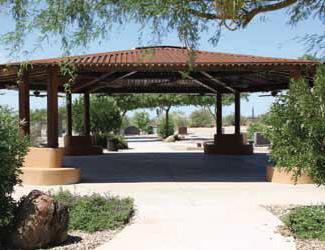
Kozlow said she’s convinced that she is following the path set before her by the Almighty, as one possible answer to the “hemorrhaging” of Jews from traditional synagogues.

“My life is a calling to serve God and Jews in the most dynamic way possible to ensure Judaism makes it into the next generation,” she said. “To preserve the continuity of our heritage.”
Kozlow knows she’s not alone in this effort.
“There are many – especially women – who are breaking out of the confines of the traditional construct of running synagogue life,” she said. “We have new ideas and we’re taking a chance. People are hemorrhaging away from normative synagogue life. Those of us in the field feel our hands are tied. And I’m creating a community where my hands are not tied. To bring people their Judaism in a profound and loving way.”
The research shows attendance at synagogues is declining. According to a 2020 survey by the Pew Research Center published in May 2021, half of American Jews attend religious services a few times a year or less. Of 11 possible reasons for not attending religious services, the top choice was “I’m not religious.” Other common explanations were “I’m just not interested” (57%) and “I express my Jewishness in other ways” (55%).
“Many people say they’re spiritual, but not religious. We see that in the studies,” said Rabbi Shira Koch Epstein, executive director of Hillel’s Center for Rabbinic Innovation, a project of the

Office of Innovation.
“We teach our clergy and we see success when they work with the people that they meet,” she said. “And instead of saying, ‘come to what we have,’ they say, ‘let’s try something together that might meet what you need.’ And not because I, rabbi, or I, president, want it – but because I think this is something we might try together.”
Like Kozlow, Epstein said that to reach people who consider themselves spiritual though not necessarily religious, one must find out what that means by asking the individuals and design your approach based on the answers.

“I have a rabbi in one of our groups, she’s starting a community in Atlanta that’s based on taking Judaism into nature and doing nature hikes that then have a spiritual component that brings in elements of Jewish learning and worship,” she said. “They bring in Jewish music, and that is now developing into a community that not only just hikes together but has Shabbat dinners – there are a bunch of parents with young children who are celebrating Shabbat together. And the rabbi, she’s bringing in real Jewish texts and worship, but doing it in a way that is starting with where the people are and what they’re wanting and needing – and building it with them.”
This is similar to how Kozlow describes her approach. She creates 10 to 14 monthly Jewish, religious and spiritual activities like Torah study, “Jubu” (Jewish/Buddhist) meditation and “holy hiking,” that are different each month.
Sensing and gauging the needs of the community, she “organically” creates appropriate programming and sends out a monthly schedule of events.
“You have to get out of the building to experience God, to find God,” Kozlow said. “You can’t sit in the pews. You’ve got to get up and get out and look for God where you find beauty.”
In this way, Kozlow said she hopes to inspire followers who may have lost some of their Jewish spirit.
“I’m being as creative as my soul wants to be; to speak to Jews on all sorts of levels,” she said.
It’s been a long and winding road to this place for Kozlow.
After giving birth to her first child at 27, she had an epiphany that changed her life.
“I knew from that moment that life was utterly purposeful,” she said. “I’ve always been a deep, spiritual person, and something about the birth of my first child, I was drawn to a deeper connection to Judaism than I’d had growing up.”
two teenagers and was ordained at 50,” she added. “It was a challenge. And then

to the rabbinate,” she said. “I feel blessed and plan to give it everything I have. Because I believe in it. We all need a safe place to land, and in The Community, if you’re Jewish, you will be seen for who your soul is.”

Kozlow is passionate about the work developing what she believes is a model for the synagogues of the future.
“My feet have not touched the ground,” she said. “This gives me power to be what God has called me to be. I’m not the rabbi for every Jewish person in the world. No one is. But, as a woman, I am for the first time living in an egalitarian society, Jewishly. I feel like a change agent.”
I felt I was being shoved into a box (in the traditional synagogue structure). It’s antithetical to spirituality. It was such a struggle to manifest my soul’s calling to the rabbinate. Politics becomes a suffocating overreaching umbrella. But now, at 65, hallelujah, I’m out of the box, and there were 25 families out of the box who said ‘we want what you’re selling.’”

The walls preventing Kozlow from fulfilling what she believes is her mission, have come down.
“Once I made the decision to follow my real passion, without having to make time for boards and to make myself safe from politics, I have created my dream community – the dream that called me

Though she has encountered some succeeds, she’ll be satisfied with the effort.
“I feel like I’ve been coming out of the limiting boxes I’ve been shoved into for many years. It was suffocating me. It was a matter of life and death spiritually,” she said. “This is a chance to face God faceto-face, as I try with everything I have to create this beautiful, spiritual, sacred path for my congregants. If it works, hallelujah. If it doesn’t work, I tried. I will be at peace.” JN
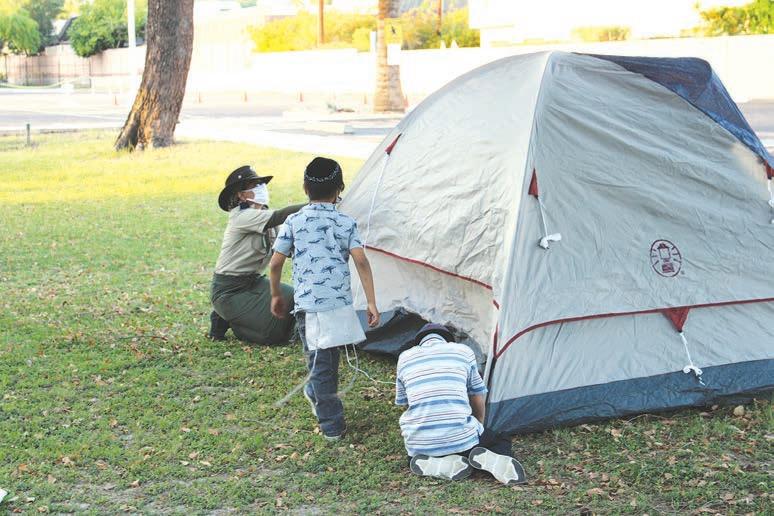
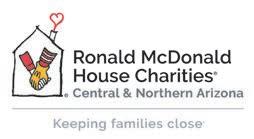 MICHELLE TALSMA EVERSON
MICHELLE TALSMA EVERSON
Shari Judah has fond memories of being a Girl Scout growing up – unfortunately though, after a time, she had to leave the program because its events conflicted with her keeping Shabbat. “If you can’t go to many of the events, it’s not as fun,” Judah recalled. In 2018, wanting scouting to be accessible for her own children, Judah and friend Seth Rosenberg co-founded a kosher Shomer Shabbat family cub pack in Phoenix – known as Family Cub Pack 210 – which is chartered by the Jewish War Veterans of Scottsdale. Fast forward to today and it’s only a matter of paperwork before the pack also has its own official Boy Scout Troop 210.
“Seth (Rosenberg) is officially our current cubmaster and I’m the assistant cubmaster,” Judah said. “But once paperwork is approved for our troop, he will go ahead and be scoutmaster for our Boy Scout troop and I will become cubmaster for our cub scouts.” Boy Scouts of America (BSA) was created in 1910 and has undergone many changes in its time. For example, the organization did not allow women in leadership positions until 1988. In 2013, it announced the group would admit openly gay youths, ending a policy it had since its founding. In 2017, BSA
announced it would accept transgender youth into its scouting programs and allow women to join as scouts starting in 2018. In 2019, the Boy Scouts – the program for 11-17-yearolds – announced it would change its name to Scouts BSA.
As of 2014, only 0.13% of the more than 2.4 million youth involved in BSA were affiliated with a synagogue or Jewish chartered organization, according to a BSA fact sheet on chartered organizations.
Last year, the Boy Scouts of America’s Grand Canyon Council (GCC), an independent nonprofit organization chartered by the Boy Scouts of America in Arizona, celebrated 100 years of scouting. “This anniversary is a major accomplishment; for 100 years, GCC has been supporting the future leaders of Arizona, providing outdoor adventures, teaching them outdoor skills and instilling the values of the Scout Oath and Scout Law,” said Andy Price, CEO and scout executive of GCC.
“The process to becoming an official BSA pack and program took several years, but it is so worth it for the experiences our children get to have in the program,” Judah said. “Scouting helps to teach self-confidence, leadership skills, the importance of a strong community, how to work together and more.”
Like Judah, Rosenberg grew up in scouting
and wanted a similar experience for his son. Both cite that there are many reasons why a Jewish child may not be comfortable joining a BSA pack or troop associated with another faith, including not being able to participate in many of the activities or eat kosher on outings.
“Scouting is a valuable program, and our pack gives scouts the ability to be a part of the scouting program without taking away from their Jewish experience and understanding,” he said.
Some of the things that make Family Cub Pack 210 different from non-Jewish affiliated BSA groups are that they observe Shabbat, eat kosher on BSA outings and observe Jewish holidays, among other details.
Pesach Lattin, Judah’s husband, also grew up in scouts but did so before converting to Orthodox Judaism. He believes that many tenants of scouting are in line with his faith. He also shared that the pack not only is a positive influence on its young members, but their partnership with the Jewish War Veterans has impacted multiple generations.
“Being charted by the JWV has benefited both sides – we’ve been in the Veterans Day parade multiple times and the veterans have been able to spend time with the kids and share their stories,” Lattin said.
The pandemic has taken its toll on what activities Family Cub Pack 210 has been able to do, but they hope to be more active and continue to grow as time moves forward.
“Scouting is basically a leadership program that teaches important qualities compatible with the Jewish experience; how to have respect, be a respectful community citizen, leave no trace, having a gentle impact on the earth,” Rosenberg said. “Our pack is a great way for a child to be fully observant and still be a scout.” JN
To learn more about Family Cub Pack 210, e-mail cub210phx@gmail.com or follow them on Facebook @PHXJewishScouts.
Michelle Talsma Everson is a freelance writer, editor and PR consultant in Phoenix.
EXHIBITIN G BR AN DS:
OVER 24 Cruise andTravel Brands will be represented at this event! NCL, Seabourn, Princess, Carnival, Holland America, Silversea, Cunard, Rocky Mountaineer, Ponant, Globus,Windstar, Sandals and more!

TIC KE TS:
Event is for vaccinated guests only. Masks are suggested.Thank you.
bird Admission - $3.00 | At the door - $5.00 (cash only)

RACHEL RASKIN-ZRIHEN
Avah Montgomery, a member of the Youth Philanthropy Board of the Jewish Community Foundation of Greater Phoenix, was accepted into the first-of-its-kind Jewish Youth Assembly (JYA) through the World Jewish Congress (WJC), agency officials announced.

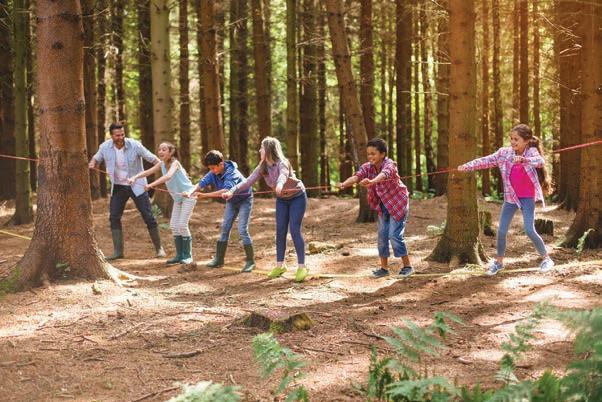
She is one of two Arizona teens who applied and were accepted, according to Yoni Hammerman, a senior manager of the WJC. Nearly 100 students from 20 countries will be participating this first year, he said.
The New York-based World Jewish Congress is the international organization representing Jewish communities in 100 countries to governments, parliaments and international organizations.
“About a quarter of the participants are from the United States, which is by far the largest Diaspora Jewish community in the world,” Hammerman said. “There’s something beautiful about bringing Jewish youth from around the world together to learn from each other. We’re excited to see where it goes.”
A freshman at Shadow Mountain High School in Phoenix, Montgomery also attends Hebrew High of Greater Phoenix. She said that, among other things, her acceptance into the program reinforces her belief that she’s on the right track with her life.
“After I applied, they let me know it was received, and then I got an email in mid-January that I’d been accepted and that details would follow,” she said. “I was really excited. Helping the Jewish community is a core value of mine. Continuing my Jewish education is really important to me. This reinforces that I’m doing what I’m supposed to be doing and I’m right where I belong.”
As a program officer of the Jewish
Community Foundation’s Youth Philanthropy Board, Montgomery works with the group to grant $10,000 to community organizations. She also established her own B’nai Tzedek Youth Philanthropy Fund with the Jewish Community Foundation. This is a lifelong, charitable endowment fund that she uses to support various causes.
According to the JYA website, the event Montgomery will be attending is designed to help youth “Learn about global Jewry. Engage in the issues facing Jewish communities today. Make your voice heard.”

The JYA is a multi-day conference for students aged 15-18 to work collaboratively, conduct research, learn about Jewish communities around the world and discuss the most pressing issues facing the Jewish people today. Replicating the WJC’s structure, students at JYA gain an inside look into the WJC process and build techniques to problemsolve issues of concern to the Jewish community across the world.
Working with Jewish youth from around the world is one of the main things that interested Montgomery about the event.
“I thought it would be a great opportunity, and what drew me in initially was that people would be participating worldwide,” she said. “It would be unique to get opinions from people worldwide.”
Montgomery believes people may develop biases based on where they live and a lack of understanding of how people in other places think.
“We don’t see what goes on in other places, and that could influence our giving as philanthropic donors,” she said. “Also, I’m looking forward to networking with
peers, building connections and really just learning.”
Launched in 2021, the event is “A first-of-its-kind opportunity for Jewish high school students to connect and discuss challenges facing the global Jewish community,” according to the site.
The event is set to be held over two days – Feb. 13 and 27 – from three to five hours each day.

Each session introduces students to new information, where they can engage with community leaders and topic experts. In between sessions, students will have time to learn about other opportunities, network with their peers and meet Jewish leaders from the WJC network. Throughout the two Sundays, students will also learn skills related to public speaking, writing resolutions and diplomacy through on-demand video sessions exclusively available to JYA participants.
Montgomery said she plans to take advantage of the links to the various videos that will be offered so she can come prepared for the session on Feb. 27.
“I hope to come back with a greater knowledge of the world, especially from the lens of Jewish leaders, and how to implement those on some of the boards I’m on,” she said. “Also to connect with some of my peers at school and share what I’ve learned. Ultimately, I’d like to be a professor, with an emphasis on religious and women’s studies.”
During the assembly, which is similar in approach to the Model United Nations, some 100 participants will be assigned to one out of 12 country delegations representing a Jewish community. The youth delegations will then meet with leaders of those Jewish communities to learn first-hand about their unique
characteristics and specific challenges.
the core issues facing Jewish communities worldwide that are affiliated with the World Jewish Congress, such as preserving the memory of the Holocaust for a generation without access to first-hand testimony and confronting contemporary forms of antisemitism and Holocaust denial on social media,” the website says. “The assembly will devote special attention on ways to combat online hate, the next generation’s approach to Jewish peoplehood, as well as strategies to ensure a strong, proud and secure Jewish future.”
Having never been to Israel, Montgomery said she is especially eager to get an idea of the perspective of Jewish youth and leadership there, compared to what people tend to believe in Arizona.
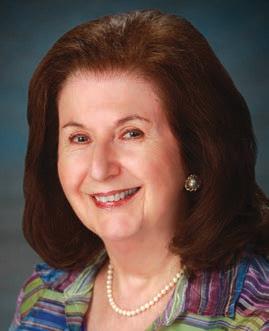
“In Arizona, Jews are faced with different things based on the politics we have,” she said. “I think we have the same core values and it would be interesting to see how those values are portrayed internationally.”
Montgomery’s mother, Gabriella Montgomery, is thrilled for Avah to have this experience and proud of her only child’s accomplishments.
“I’m so excited for her continued interest in Jewish culture and in continuing our history,” she said. “I am so proud of my daughter.” JN

Iam not in denial and I admit that it looked a little awkward. The scene took place in the waiting area of a local hair salon. My son, a small 23-year-old, was sitting on a chair with his fingers pressing on his ears to block out the noise. A 4-yearold boy was pulling on his dad and pointing toward my son, squeaking in his little voice, “Dad, what is he doing? What is he doing?” The boy asked his father repeatedly as the dad stumbled on formulating an answer. Eventually, the dad answered that he was saying “hi.” This answer was enough to placate his son as he pulled him out of the salon.
Scenarios like this are not uncommon. My son Tyler was diagnosed with autism at age 2. Currently, about 1 in 44 children has been identified with autism spectrum disorder (ASD) according to estimates from CDC’s Autism and Developmental Disabilities Monitoring (ADDM) Network. A diagnosis like this can hit any family regardless of religion, race or socioeconomic status. In the end, as parents, we all want the same thing – for our children to be happy, be the best that they can be and be productive members of society. Having children brings forth a wealth of hopes and dreams for their future. When you have a child with autism, you have to be prepared to shift those hopes and dream for something that is achievable. As my son grows, those goals are ever-changing.
Tyler is part of a set of triplets, along with Jacob and Reanna, so watching two out of three thrive and participate in all of life’s rites of passage is a little disheartening when you want all three of them to have the same experiences. My son is non-verbal and profoundly affected by his autism. He continued throughout elementary school to go to a different school from my other two, in order to participate in “special” classes. When it came time to start Hebrew school for their upcoming b’nai mitzvah, it broke our hearts not to see the whole set be able to participate in this rite of passage. (Not to mention, when the babies were born, our first thought was, hurray three mitzvahs for the price of one!)
In 2007, we found out about Gesher Disability Resources (then known as the Council For Jews With Special Needs). They had an inclusion consultant on staff, Ricki Light, who could help us fulfill this legacy. Our son was able to participate in Hebrew school with curriculum adapted into something he could handle and a personal aide to help him in the classroom. Bar mitzvah training was tailored to him so that on his special day, he could go up to the microphone and read his portion of the Torah. Even though no one could
understand what he was saying (his words sound like grunts), we all knew he was reading and participating like his siblings. That day in 2012, we were a solid Jewish family. I then wanted to pay it forward and began helping Gesher with its annual gala and then later joined the board of directors.
I write this article in honor of February being recognized as Jewish Disability Awareness, Acceptance & Inclusion Month to provide the thought that inclusion happens with education. Think about the scenario above in the hair salon. If little ones and their parents knew what those with autism may appear to be doing out in public and why they are doing so, the scenario could have been changed from one of questions to one of answers.
In my children’s educational book, “This is How I Help! How Little Ones Can Help Their Friends with Autism,” scenarios such as the one above take place in a classroom setting, showing students what they may see a student with autism doing and why they may be doing it. The scenario is then followed up with something the neurotypical student can do to help the student with autism, thus empowering the child who helps. I wish I had my book with me that day in the salon so I could have given the father and son a copy.
My hope for the future is that next time a scenario like the above happens, a little boy does not ask his dad, “What is he doing?” but instead tells his dad, “Look, that boy is like the boy in the book. It must be loud for him because he’s covering his ears. I hope he has his headphones.” JN
Wendi Sobelman is a former educator with a Master of Arts in counseling from Ottawa University and an undergraduate degree from the University of Arizona. Her book, “This is How I Help! How Little Ones Can Help Their Friends with Autism,” is available for purchase on amazon.com and barnesandnoble.com.



Mid-Atlantic Media, a fast-growing publisher of niche community and ethnic titles, is seeking a sta writer for its full time publishing project Phoenix Jewish News in Scottsdale, AZ. Phoenix Jewish News is an award-winning, print and digital publication covering the greater Phoenix diverse Jewish community since 1948. Our ideal candidate has experience with and enjoys writing both news and feature stories, thrives in a deadline environment and has digital media experience.
You love telling the stories and tracking down the facts that are at the heart of any article. You can thrive on multiple assignments and are flexible about evening and weekend work. Words and ideas are your oxygen. Photography experience is a plus. So is familiarity with Jewish community and Israel.

As an employee of Mid-Atlantic Media, you’ll be a part of a rapidly expanding organization that, in addition to the Phoenix Jewish News, publishes Washington Jewish Week, Baltimore Jewish Times, and other publishing projects such as Jewish Exponent in Philadelphia and Pittsburgh Jewish Chronicle. Such a range of outlets a ords writers the opportunity to have multiple bylines across the U.S.
If you are a confident and capable reporter looking for a new opportunity with a fast-growing media company, this is your chance.
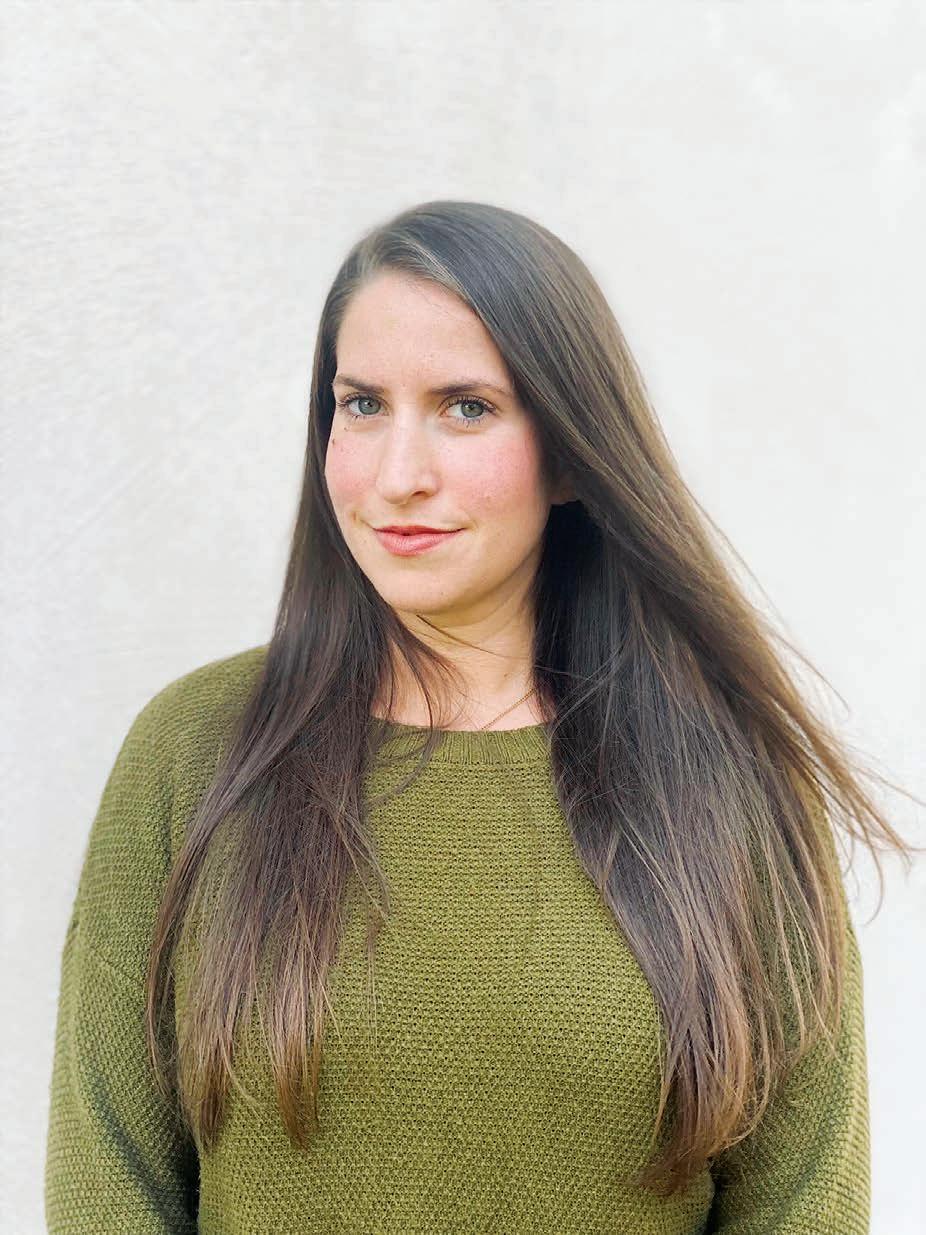
At the beginning of 2020, the Phoenix Holocaust Association (PHA) brought the “Holocaust by Bullets” (HBB) exhibition to the Greater Phoenix area. Based on the work of Father Patrick Desbois and his organization, Yahad-In Unum, the exhibit showcases the painstaking research needed to identify and document the murders of more than 2 million Jews and Roma in the former Soviet Union at 2,700 execution sites in 11 countries by the Nazi killing units. In 2020, HBB was open for six weeks at the Burton Barr Central Library and Arizona Capitol Museum in Phoenix. As soon as the exhibition moved to the Noble Library on the Tempe campus of Arizona State University (ASU), the pandemic began.


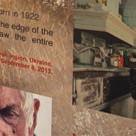

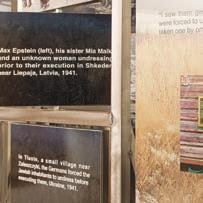
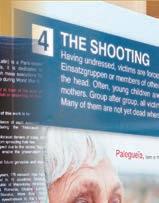

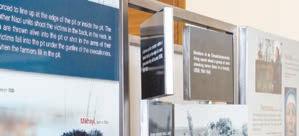
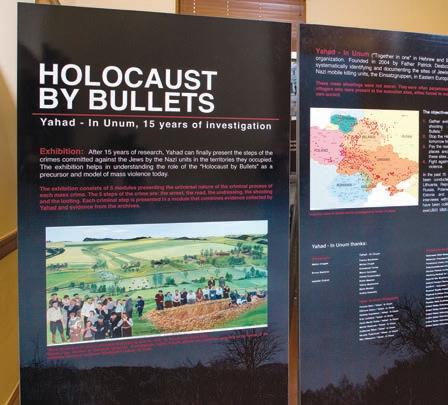
“We were supposed to open on Monday when the kids came back from spring break. It never opened and nobody ever saw it at the Noble Library,” said Sheryl Bronkesh, president of the Phoenix Holocaust Association. “It was heartbreaking. I don’t think it was until July of 2020 that we broke it down and shipped it back because we kept thinking the university would open again.”
PHA planned to bring Father Desbois back in the spring of 2021 and when COVID continued, the date kept getting pushed back. “We realized that it was crazy to plan it (for 2021) so we delayed another year and then Omicron hit,” said Bronkesh.
Finally, Valley residents will get the chance to see “Holocaust by Bullets 10 Years of Investigation” at ASU, during its run at the Hayden Library from Feb. 27 through April 17 but there are some limitations. “The only time the public will be allowed in to see the exhibit are the two times we set up for docent tours,” said Bronkesh. “That’s Sunday afternoons for two hours (1-3 p.m.) and Monday evenings for two hours (5-7 p.m.). Other than that, it’s only open to ASU students. I have my fingers crossed that that’s going to change.” ASU students will be able to visit the exhibit any hours the library is open.
The kick-off event on Feb. 27 at 3 p.m. is open to the public and features keynote speaker Rachael Cerrotti, an award-winning author, photographer, educator and audio producer who will share her work exploring the intergenerational impact of war and the inheritance of memory.
Bronkesh said that she discovered Cerrotti’s podcast,




of other genocides.
Cerrotti started working with the Shoah Foundation after Smith found her work on Instagram.


In addition to researching her grandmother’s journey, she was working on a portrait series, “Welcome to
Widowhood,” that tells the stories of women under 40 who had lost their partners. Cerrotti became a widow herself at 27 when her husband died
“There was some stuff circulating online about my work and he (Smith) saw these two bodies of work I was doing and how young I was and he was like, ‘Who’s this girl who talks about death so eloquently,’” said Cerrotti. “So he reached out to me and asked, ‘Is your grandmother in the Shoah Foundation archive,’ and I replied, ‘Yeah, I think she was interviewed by Spielberg at some point,’ and then a few minutes later I had a four and a half hour testimony of hers.”
She kept in touch with Smith and in 2018, she pitched her idea for “We Share the Same Sky” to the Shoah Foundation and received funding to launch the project. After the podcast did well, she transitioned into a consulting position as a creative director doing storytelling with the archives and that turned into the fellowship position
“I believe in the work that they do so much, so It’s been a huge pleasure not just to work with my grandmother’s story in a larger capacity, but also to get to work with other people’s family history,” shares Cerrotti. “I’ve learned so much from their archives and not just Holocaust history, but everything else that they do. It’s been a really beautiful relationship over these
Cerrotti believes it was a creative decision to invite her to be the keynote speaker because her story is so
“I’ve been very aware of Father Desbois and all of his work and it’s incredible,” she said. “To be asked to take some time and think about how the work he’s doing connects with the work that I’ve been doing. It’s been an exercise for me to pay attention to different things, to be encouraged to make connections that no one’s asked me to make before and I really appreciate
Other events scheduled include a Holocaust Educators Conference in conjunction with the Bureau of Jewish Education (BJE), a concert by the Phoenix Boys Choir, a Klezmer concert and Father Desbois as the featured speaker for the 10th Annual Genocide Awareness Week when it begins on April 4 at ASU. JN
For a complete listing of events, visit holocaustbybulletsaz.com.
The Jewish Community Foundation and The Jewish Federation of Greater Phoenix are thrilled to have helped 50 local teens experience Israel in 2021 thanks to generous incentive grants made from the Harold and Jean Grossman Teen Experience Fund.

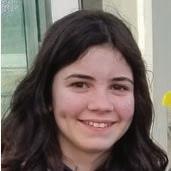
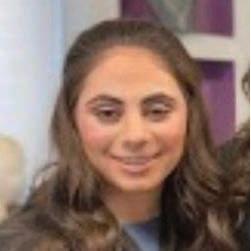
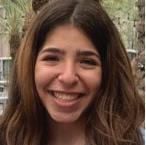

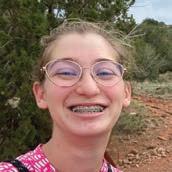
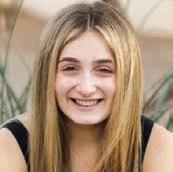

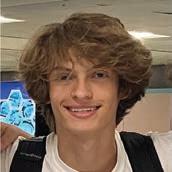
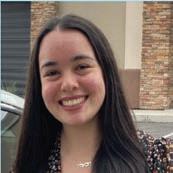
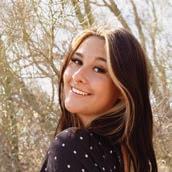

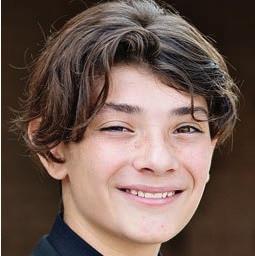
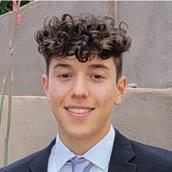

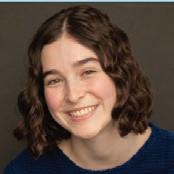

Applications for teens, grades 10-12, wishing to experience teen travel programs of 16 days or more in 2022 are open at:
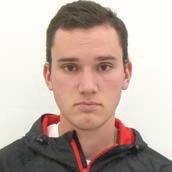
http://www.jewishphoenix.org/grossmangrant






These are not needs-based grants, just incentives to help you get to Israel! See application for grant requirements.
Other programs funded in 2021 Include:

Lily Brasch says she’s aiming to one day have March 6 declared Physical Independence Day nationwide or, maybe, even worldwide.
In the meantime, the 22-year-old physically challenged Orthodox Chicago resident plans to “climb her Everest,” in the form of Phoenix’s Camelback Mountain on March 6, during an event aptly named “My Everest.”
Brasch has centronuclear myopathy, a rare form of muscular dystrophy characterized by muscle weakness and atrophy, and was once predicted never to walk. She has been training to climb the Arizona mountain to send a message of overcoming physical challenges.
“It was a team decision to climb Camelback Mountain based on what my physical capabilities are right now and at the same time, be a challenge,” she said. “The message is that everyone has their level of struggle, and with support, they can overcome.”
Brasch’s Born to Prove (Foundation) team includes members within finance, event planning, marketing, fundraising














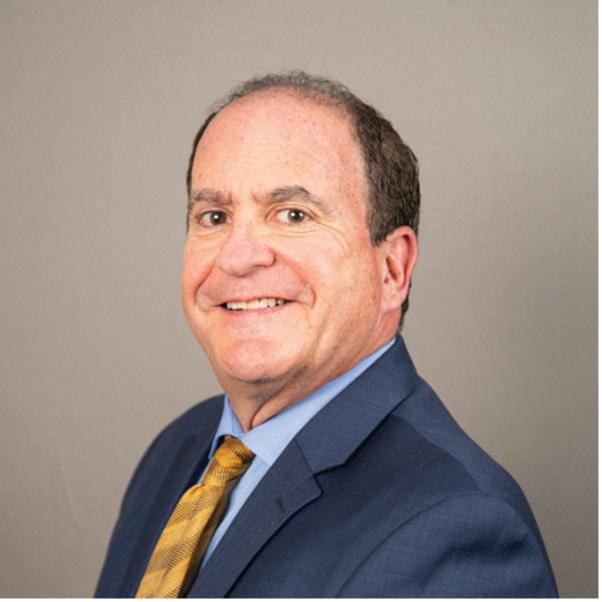
and management, a spokesperson said. Brasch says she’s seeking to become a universal voice for those who are perceived as different.
“I was born with muscular dystrophy, but due to a loving family (my abba is Dr. Joel Brasch) and strong Jewish Orthodox faith, I was able to overcome many obstacles (physically and emotionally),” her promotional material says. “In addition to creating the ‘Born to Prove’ Foundation, I am a film producer, motivational speaker and fitness competitor/exercise enthusiast.”
Brasch admits it was not easy to accept the physical limitations imposed by her condition.
“I struggled with my disability and with help from others, I was able to see my purpose,” she said.

Her passion now “is to inspire and motivate others to pursue their dreams … and refusing to be defined by one’s physical appearance, but rather by one’s contribution to society. It is my goal to become a unifier by using the story of faith and perseverance.”
Brasch is hoping many people will show up to her March 6 event, and she thinks


some 50 are signed up already.

“We hope for more because the more people, the louder the message,” she said. “We hope people will see that we all have our own ‘Everests,’ our own struggles, and I believe that if we work together, we can overcome them.”
Brasch notes that overcoming looks different for each person.
“I was told I couldn’t walk, and now I’m climbing a mountain,” she said. “It means anyone can get past their barriers. It’s mind over matter, if we unite.”
Brasch’s Jewish upbringing informs just about everything she does and believes, including her approach to having a serious disability.
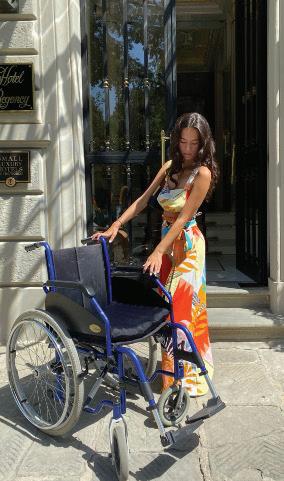
“My Jewish family, the Jewish community’s support and the lessons I was taught – that we each have a purpose and we live for reasons beyond ourselves,” she said. “It’s about our impact on others. God has a reason for everything.”
In five years, Brasch hopes she is still on the journey she’s bringing to Arizona.
“I hope to still be uplifting and empowering people to know their strengths,” she said. “And, maybe,



speaking to millions, spreading the message on an even bigger mountain and making every March 6 a Physical Independence Day where we all come together to celebrate.” JN
Brasch invites anyone interested to join her in her “inspirational climb,” scheduled to start at 9 a.m. on March 6. For more information, visit borntoprove. com or diestrong.org/my-everest.
On Feb. 1, Amnesty International (AI) released a report entitled “Israel’s Apartheid against Palestinians: Cruel System of Domination and Crime against Humanity.” The predictable firestorm followed. For those who believe and preach that Israel can do no right, the AI report was undoubtedly a “we told you so” moment. And to those for whom Israel can do no wrong, the hateful report is further proof of the antisemitic bias of Amnesty International and Israel’s enemies.
Given the accusatory focus of the AI report and its mind-bending hyperbolic name-calling, it is no surprise that the 300-page report was denounced by Jewish groups left, right and center. What was interesting was the volume of organizational denunciations that were issued before the report was even released. The pre-release announcement of the incendiary title was enough to trigger the well-deserved (yet predictable) responses and reactions.
So how do we move the discussion from accusations and name-calling and change the dynamic of the debate?
Perhaps most importantly, those who
seek to delegitimize Israel need to understand that nothing will be gained by tossing bombshells and accusing Israel of outrageous “crimes against humanity,” or of a wholly inapposite accusation
As noted by Michael Kaplow of the Israel Policy Forum in a recent piece about the AI report: “The apartheid charge … rests squarely on the concept of racial domination….The glaringly
SO HOW DO WE MOVE THE DISCUSSION FROM ACCUSATIONS AND NAME-CALLING AND CHANGE THE DYNAMIC OF THE DEBATE? PERHAPS MOST IMPORTANTLY, THOSE WHO SEEK TO DELEGITIMIZE ISRAEL NEED TO UNDERSTAND THAT NOTHING WILL BE GAINED BY TOSSING BOMBSHELLS AND ACCUSING ISRAEL OF OUTRAGEOUS “CRIMES AGAINST HUMANITY,” OR OF A WHOLLY INAPPOSITE ACCUSATION OF “APARTHEID.”
of “apartheid.” Those aren’t the real problems presented by the increasingly intractable Palestinian situation. And those on the pro-Israel side need to accept the fact that there are serious issues and problems to resolve, even if “apartheid” is not one of them.
obvious problem with this is that … this is not a racial conflict, but a national conflict. It is not about racial control, but about territorial control.” Koplow goes on to explain how different groups of Palestinians under Israeli control are treated differently, “depending on the
The ancient Jewish practice of cherem, variously described as “ban,” “separation from the Jewish community” and “excommunication,” is rarely invoked today. But just last week the Board of Deputies of British Jews, U.K. Jewry’s mainstream umbrella organization, placed a cherem of sorts on Israeli MK Bezalel Smotrich, the leader of a small religious ultranationalist Jewish faction in the Knesset that is currently in opposition.
Smotrich was in Britain to drum up opposition to the Israeli government’s plan to reform state-controlled Jewish religious services. But the Board of Deputies wanted no part of Smotrich or his message. Indeed, they didn’t even want to hear what he had to say. Their tweets were clear: “We call on all members of the British Jewish community to show him the door. Get back on the plane, Bezalel, and be remembered as a disgrace forever.”
The unusually direct and dismissive approach of the Board of Deputies prompted the expected responses. Those offended by many of the highly charged and discriminatory statements made by Smotrich over the years applauded the
move. And those more sympathetic to his ultranationalist views or who otherwise support his political objectives were critical. But everyone recognized that the unusual pronouncement of the normally staid Board of Deputies of British Jews was significant.
Arab population and ill-informed and accusatory proclamations about gays are just plain offensive.
The Board of Deputies of British Jews was so offended by Smotrich’s intolerance and racism that they wanted to silence him entirely. For an establishment
SHUNNING AND REFUSING TO ENGAGE WITH HIM (SMOTRICH) AND HIS SUPPORTERS SEEMS THE LEAST EFFECTIVE WAY TO CONVINCE THEM TO RETHINK THEIR VIEWS. INSTEAD, IF THE LOGIC AND WISDOM OF CONTRARY VIEWS IS AS COMPELLING AS THE BOARD OF DEPUTIES BELIEVES, WHY NOT ENGAGE, EXPOSE AND EDUCATE SMOTRICH AND OTHERS, AND LEAD THEM TO ACCEPTANCE OF A MORE TOLERANT AND REASONED POSITION?
Smotrich, the youthful-looking politician who heads the rightwing Religious Zionism Party, brought a lot of weighty baggage to his confrontation with the British arm of Diaspora Jewry, including years of anti-Arab and anti-LGBTQ rhetoric. His nasty, demeaning statements about Israel’s
organization to take such an aggressive public position regarding a visiting Israeli MK must have required significant internal deliberation and discussion.
And the result was understandable, even if we would have reached a different conclusion.
We have long supported engagement,
status of Israel’s control over the territory on which they live.” Koplow points to the differing treatment of full-citizen Palestinians within the Green Line all the way to those under the Palestinian Authority or military rule in the West Bank and still different rules for those in Gaza, and argues that “If Israel were exercising a system of domination and oppression based on racial classification, none of these distinctions would exist or make any sense.” He’s right. But removing the issue doesn’t solve the Palestinian puzzle.
Further, it is not antisemitic to point out, as AI does, that Israel weakened its argument for equality when it passed the Nation State law in 2018. Not only did that law denigrate Israel’s Arab citizens and their culture, it also ignored the national aspirations of the Palestinian people.
So, there is serious work to be done on both sides. And in pursuing that path, those leading the effort will undoubtedly be better served by seeking to recognize and address one another’s legitimate aspirations than focusing upon much less productive accusations. JN
dialogue and respectful debate even with those with whom we disagree. Smotrich and his intolerant views fall squarely in the category of someone with whom we disagree strongly. But he is an elected representative of the Israeli people, and he represents a significant constituency of Israelis. Shunning and refusing to engage with him and his supporters seems the least effective way to convince them to rethink their views. Instead, if the logic and wisdom of contrary views is as compelling as the Board of Deputies believes, why not engage, expose and educate Smotrich and others, and lead them to acceptance of a more tolerant and reasoned position?
We are also concerned that the Board of Deputies’ “dismissal” of those with perceived offensive views could encourage others to follow suit, with the result that engagement and dialogue on important issues will cease. No one gains from that approach. As much as we disagree with the hateful rhetoric and intolerant views of Betzalel Smotrich, the better course would have been to engage with him in respectful dialogue and make clear why he is wrong. JN
We are a diverse community. The views expressed in the signed opinion columns and letters to the editor published in the Jewish News are those of the authors. They do not necessarily reflect the views of the officers and boards of the Jewish Community Foundation, Mid-Atlantic Media or the staff of the Jewish News. Letters must respond to content published by the Jewish News and should be a maximum of 200 words. They may be edited for space and clarity. Unsigned letters will not be published. Letters and op-ed submissions should be sent to editor@jewishaz.com.
In middle school, I was fascinated by the list of America’s most banned books, noting that many of them were standards that were taught in the classrooms of my school: “Catcher in the Rye,” “Fahrenheit 451,” “To Kill a Mockingbird,” “Of Mice and Men.” These were some of my favorite books, books that brought the classroom to life, books that challenged my perceptions, books that kept me up late reading ahead.
So, why was it that some of my favorite books were so controversial? Many of the challenges center around “inappropriate” ideas, “profane” language and questions about if and when relatively mature content should be introduced to adolescents and young adults. In recent years, there seems to be a marked increase in curricular challenges to the novels taught in middle and high schools across the country, both in public and private schools.
The recent news about a Tennessee school board banning Art Spiegelman’s Holocaust-related graphic novel “Maus” is yet another step in the direction of censorship and the dumbing down of the literary canon in an attempt to reach the lowest common denominator:
books that will not offend anyone.
And yet, all too often, books that can offend are also books that can inspire. Education is a process of breaking down and building up, and the literature classroom thrives on debate and discussion. The motives of those
of certain language or images.
In the case of “Maus,” the board’s unanimous vote determined that the book is not appropriate for their district, citing bad language (such as “God damn”) and a cartoon nude drawing of an animal. Spiegelman himself commented on the
TEACHING ENGLISH TO ADOLESCENTS IS ABOUT SO MUCH MORE THAN READING COMPREHENSION, SENTENCE STRUCTURE AND PROPER GRAMMAR; IT IS ABOUT TEACHING STUDENTS HOW TO THINK, HOW TO CHALLENGE AND HOW TO LEARN. AND, HOPEFULLY, HOW TO LOVE LITERATURE AS THEY ENCOUNTER NEW IDEAS AND CHARACTERS.
pushing to ban certain books from the classroom are not always clear. Many of the books being challenged feature themes related to race, gender and sexuality. However, like the recent situation in Tennessee, the surface objections usually come down to the appropriateness
ban, calling it “Orwellian,” doubting that the challenge was really based on language and the image alone. But the board maintains that their decision was unrelated to the Holocaust-related content of the book.
Other popular school novels have also
been challenged in recent years. “The Adventures of Huckleberry Finn” is taught in far fewer schools than it was a few decades ago, primarily based on its use of racial slurs. And “To Kill a Mockingbird” and “Of Mice and Men” are in the news again, and may be the next classics to go.
Other challenges surround books that feature LGBTQ characters, such as “The Perks of Being a Wallflower” by Stephen Chbosky or “George,” by Alex Gino, on the theory that “normalizing” these characters could have a damaging effect on “innocent” readers.
Some adolescent modern classics, like “The Outsiders” by S.E. Hinton and “The Hunger Games” by Suzanne Collins, have been challenged for their violence and strife, despite being perennial student favorites.
There is good reason to keep the edge in our literature, and to support efforts to use it to help students face the realities of life through the lens of great literature.
Aristotle famously said that “the essence of drama is conflict.” A good literature class comes to life when the anchor text challenges and confronts. The safety of the classroom is a perfect place for
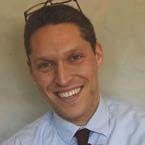
RABBI DR. SHMULY YANKLOWITZ
Growing up, like lots of idealistic young people, I always wanted to be the kind of person who would change the world drastically and for the better – perhaps as a lifesaving scientist, a soul-inspiring musician or a transformative political leader. The problem was I wasn’t quite cut out for those fields and even those who do make it big in the public sphere don’t always have a profound or positive impact.
So instead, I found myself on the path of pursuing wisdom and justice in the religious realm, where I learned from the Talmud that saving a life is like saving the entire world. Fair enough, but saving even one life isn’t exactly easy either. Becoming a surgeon, for example, is extremely difficult, as is being a first responder.
Then, when I was in my mid-30s living in Scottsdale, AZ, teaching Jewish values each day, it dawned on me that I had an accessible opportunity to save a life through “altruistic kidney donation,” meaning giving a kidney to a stranger. While the benefits of such an action are,
just as the Talmud teaches, boundless, I was overwhelmed with existential questions. What is my obligation to protect my own life? What if, God forbid, my wife was to lose her husband, and my kids were to lose their father? What if my remaining kidney were to fail later on?
At that time, I didn’t have access to the literature I wanted in order to be informed. I felt morally paralyzed by the enormity of the quandary. So I pledged that if I were to pursue this path of donation, I would afterward create a resource that could be helpful to others – to people considering donating their kidneys and for those wanting to be supportive of their loved ones who wish to donate.
That’s why I wrote “The 5-Ounce Gift: A Medical, Philosophical & Spiritual Jewish Guide to Kidney Donation” (Ben Yehuda Press, 2022). For this book, I gathered Torah wisdom from Jewish teachers, medical guidance from surgeons, knowledge from the world of philosophy and practical experience from others who have donated.
We face an enormous problem in our communities: About 90,000 people in the U.S., per the National Institutes of Health, are on the kidney transplant waiting list, and only about 20,000 transplants per year can be completed. Our hearts break for those suffering from end-stage kidney disease, also for their family and friends struggling along with them.
This is yet another example of the potential for science and Judaism to work together for the improvement of the world. By tying the moral responsibility imbued by our tradition to the lifesaving power made possible by medical advancement, we can bring each field toward its full purpose.
My goal in writing this book was not to persuade people to become kidney donors. My objective is to have an honest and open exploration of the questions involved for those interested. I hope to help readers grapple with our obligations to one another and our duty to protect ourselves.
Ultimately, I decided to go through with my kidney donation. I had my
kidney removed in New York in June 2015 at Mount Sinai Hospital in New York City. And my kidney was given to a very young Israeli named Yossi, who had lost his mother at a young age. I didn’t choose him as my recipient; I was willing to donate to anyone. But I felt deeply drawn toward him and accepted him as the first option presented to me.
“As far as I’m concerned, every person who donates a kidney is a superhero,” Yossi wrote shortly after his successful surgery in an essay now included in this book.
I never did become Albert Einstein, or Yo-Yo Ma or the president – or one of the many nurses who do life-saving work every day. But to Yossi, it was as if I had saved the world. I want to figure out how we can work to save more worlds together. JN
“The 5-Ounce Gift” is available for pre-order through Ben Yehuda Press. Proceeds will go to Valley Beit Midrash to further our Jewish educational programs.
here is a vivid memory that I have as a young boy growing up in Johannesburg, South Africa, walking into a large department store in the suburbs and being faced with a peculiar “nativity.” A large calf surrounded by robed people looking up with great reverence.
This took place around Passover, and I imagine this was a marketing attempt at connecting to their Jewish customers. Unfortunately, the painful reminder
BUTLER
CONTINUED FROM PAGE 12
of national betrayal constitutes a racial faux-pas. As the years have passed, I have developed a deeper and more profound understanding of that tragic moment in Jewish history. I hope this perspective will enrich our understanding of the timeless nature of the Torah.
The conventional understanding of the biblical narrative is that the Jewish people engaged in an act of idolatry forty days after experiencing divine revelation. It is impossible to accept that the singular personal revelation of G-d would be followed by a descent into hedonistic paganism. Nachmanides explains that this was not the case at all. The Jewish people, expecting the return of Moses from Sinai, felt abandoned by their leader. Nachmanides explains that Kabbalistcally, G-d engages with the
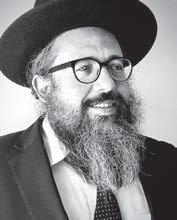
world through four modalities. The calf represents the modality of strict justice. The Jewish people, bereft of leadership after experiencing the greatest heights of human existence, sought to create an intercedent to cling to the Divine. The calf was a portal through which they could remain attached to the Sinai experience. They felt that strict justice truly expressed their current state, lost in the desert with no guidance. If that is so, what was so egregious that the Talmud teaches that all pain and suffering of our long history is in some form related to the Golden Calf? The eternal lesson of the Golden Calf is that the twisting of Torah to accommodate the needs of men is the source of human suffering. Nietzsche is often quoted saying, “G-d is dead”; few complete the
FEB. 19 - 6:54 P.M.
FEB. 26 - 7:00 P.M.
dictum “for man has killed Him.”
This Shabbos, we have an opportunity to reconnect to the pristine truth of Torah knowledge. There is no greater privilege than being a part of a nation that is privy to the mind of G-d. Drink deeply from the essence of all reality. JN
thoughtful discussion and debate that aids in development of critical thinking. Teaching English to adolescents is about so much more than reading comprehension, sentence structure and proper grammar; it is about teaching students how to think, how to challenge and how to learn. And, hopefully, how to love literature as they encounter new ideas and characters.
The purpose of reading literature is not for readers to model every behavior they see in the characters, but rather to

learn from the characters’ choices, and to allow for easier discussions about difficult subjects. For example, I often teach Ray Bradbury’s excellent short story “All Summer in a Day” when I want to discuss bullying and exclusion with my middle school students. Imagine how much easier it is to talk about the story’s antagonist William bullying the protagonist Margot, instead of asking students to share personal experiences. Students read about William’s growing harassment and nastiness toward
Margot, and can dispassionately discuss how each of the characters should react.
When we teach Shakespeare’s “Romeo and Juliet,” we are not advocating disobeying parents or the tragedy of suicide. When we teach “The Outsiders,” we are not encouraging our students to drink, fight or burn down barns. When we teach Orwell’s “Animal Farm,” we are not advocating for a violent revolution. Instead, good teachers use the edge in literature to hook students’
attention and to inspire high-level thinking, reasoning and empathy in our students.
Part of what helps students learn to love literature is showing them that stories can be exciting, challenging, inspiring, infuriating and edgy, while still educational. We aim to show them that a good book can be as, or more, entertaining and engaging than anything they passively watch on social media, in mass media or via their streaming services. The recent attempts to censor more and more parts of our literary canon cut away at teachers’ options for meaningful classroom growth and sanitizes the reading curriculum to the point where controversy and difficult discussions are avoided. This robs students of opportunities to learn about diverse life experiences and to reach beyond themselves for understanding. And, perhaps most importantly, it makes inspiring students to love reading even more difficult than it already is.
To parents who are concerned about material being taught in your children’s school novels: Take a look at what your children are viewing online, the videos they are watching on TikTok, Instagram and YouTube, the movies and shows they watch on Netflix, Hulu and Amazon, and the searches they conduct while going “incognito,” and direct your censorship there. My bet is that you will find the most “controversial” literature being taught in schools will pale in comparison. JN
Expert opinions vary on the best age for a child to try overnight camp, although, when it comes to Jewish overnight camp, the consensus seems to be it’s never too late and almost never too early.
“Deciding when to start spending a summer at camp is a family decision between camper and parent,” said Jennifer Walker, assistant director at Camp Daisy and Harry Stein. “We welcome campers to start at any age. If you think your camper may be too young to start, (remember) camp is a place to gain independence and grow. We have campers that spend their first summer at Camp Stein in second grade and we get campers that spend their first summer at camp participating in our LTP program (for rising 10th graders). It is never too late to begin your summer camp journey.”
Camp Daisy and Harry Stein, a Jewish overnight camp owned and operated by Congregation Beth Israel in Scottsdale, is located in the Bradshaw Forest of Prescott, north of Phoenix.
The American Camp Association’s Parent’s Blog “What’s the Best Age for Camp?” has advice similar to Walker’s. “When to start sending your child to sleep-away camp is a decision that depends on you, your parenting style and your child’s temperament. If your child is 5 or under, that’s too young for overnight camp alone. Go to a family camp together, or try an American Camp Association-accredited day camp program in your area, which is a great way to get a feel for what camp is all about.”
URJ Camp Newman, a Jewish camp in Santa Rosa, CA, often hosts campers from Arizona. Camp Director Rabbi Allie Fischman also agrees that the answer to the right age to start overnight camp varies widely.

“Every child is different, and what we do is meet every child where they’re at,” said Fischman. “Kids are ready at different ages. The west coast kids are used to shorter times at camp. We’ve had first graders and that worked, and they were just out of kindergarten. First grade seems like a good time for starting. They’re probably dressing themselves, doing some chores at home and gaining a little independence.”
Fischman suggests for longer camp sessions, entering third grade – age 8 or 9 – seems like a good starting age.
Camp Newman offers a 4-Day Taste of Camp for children in first through fourth grade. “This is our second year
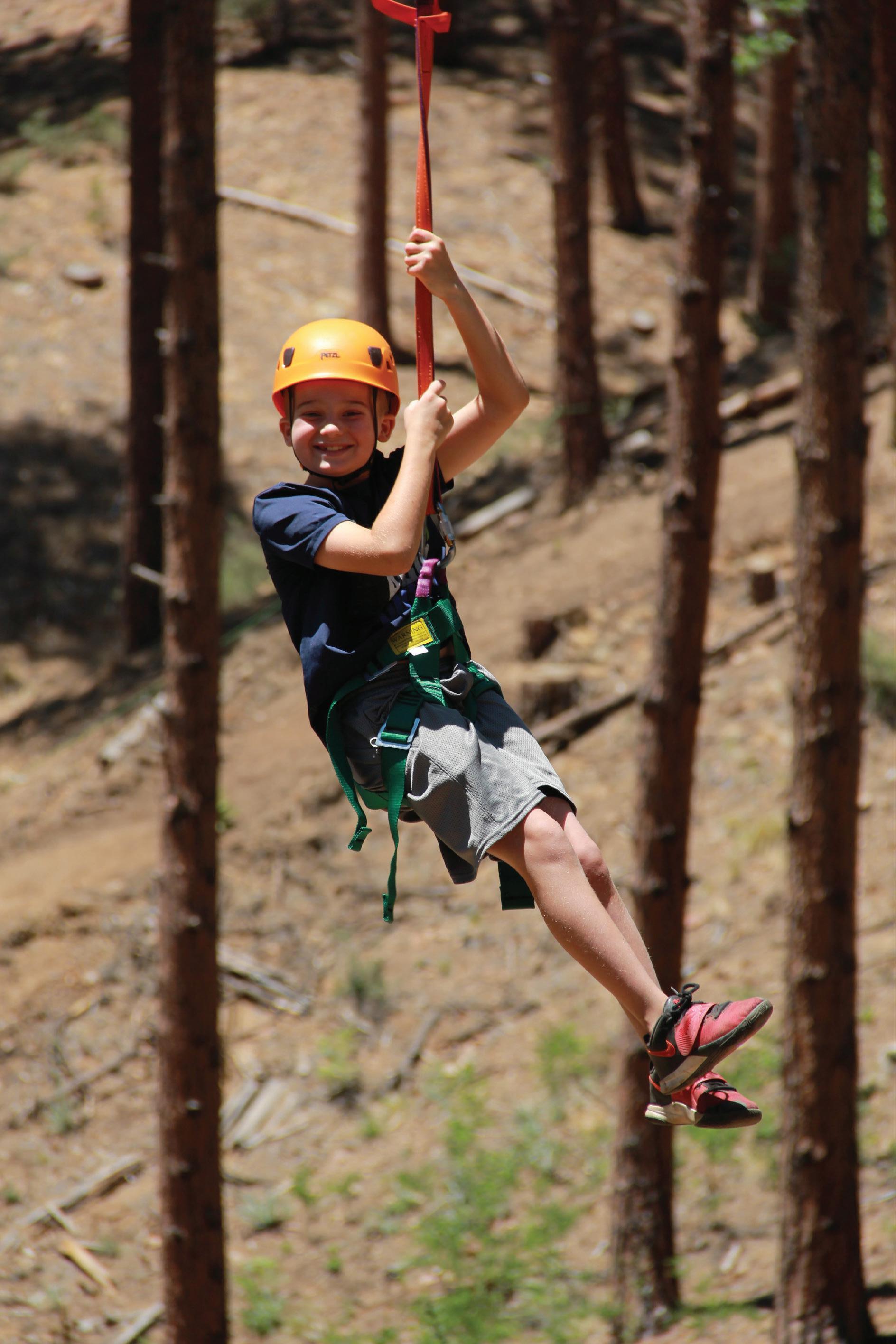
(offering this) and more than 70 (kids) registered. At least half of the kids were ready to come back next year,” Fischman said. “One kid who was so tiny, turned to her parents as they were leaving and said ‘OK, sign me up for the whole summer next year.’ That was so cute.”
Walker reminds parents that camp employs many people to support their camper. From counselors, unit heads, directors, rabbis, camper care team members and more.
“Let them know that if they have questions or need anything, these are the people to go to,” she said. “Before camp, talk about all the exciting activities they will participate in and new people they will meet. Camp is a place to have fun, be silly and be yourself.”
Before arriving at camp, camp officials ask parents and campers to fill out “getting to know you” forms.
“This way, we can learn a lot more about our campers to help them have the best possible experience at camp,” said Walker. “Also, talk to your child about shared living spaces. Campers will have their own bed and cubby space but share the general area and bathrooms.”
This type of sharing may be new to some campers.
“For younger campers; help them put together their outfits, make their bed, brush their teeth and shower independently so that these skills are familiar and practiced when they arrive at camp,” suggests Walker. “Have your child pack their bag with you. That way, they’ll know where everything is and what items they are bringing to camp.”
She also suggests bringing preaddressed and stamped envelopes to send home.
“Our counselors are always there to help, but this ensures that they have the correct addresses to get to where they need to go,” Walker said. “Don’t hesitate to reach out to the camp to ask any questions prior to the summer. Most importantly, relax and enjoy your time. Your child is well taken care of and having a great experience.”
Fischman said one way to help prepare younger children for overnight camp is to have them practice by staying overnight at a friend or family member’s house. This helps prepare them for the change in their routine.
“Camp upends home routines. If your kid freaks out trying to do that, that’s a good indication your child might not be ready for staying overnight (at camp),” she said.
Sending a child to Jewish camp – when
they are ready – can be an extremely positive experience.




“I’m a camp professional and believe there is no greater gift a Jewish family can give their kid. It can be transformative,” said Fischman. “All of our camps are doing everything possible to make them feel fundamentally comfortable and set with Jewish values. A lot of times, they come back as counselors. It’s really
The cost of overnight Jewish camp can appear unaffordable to some parents, but there are scholarships and other ways to get financial assistance.
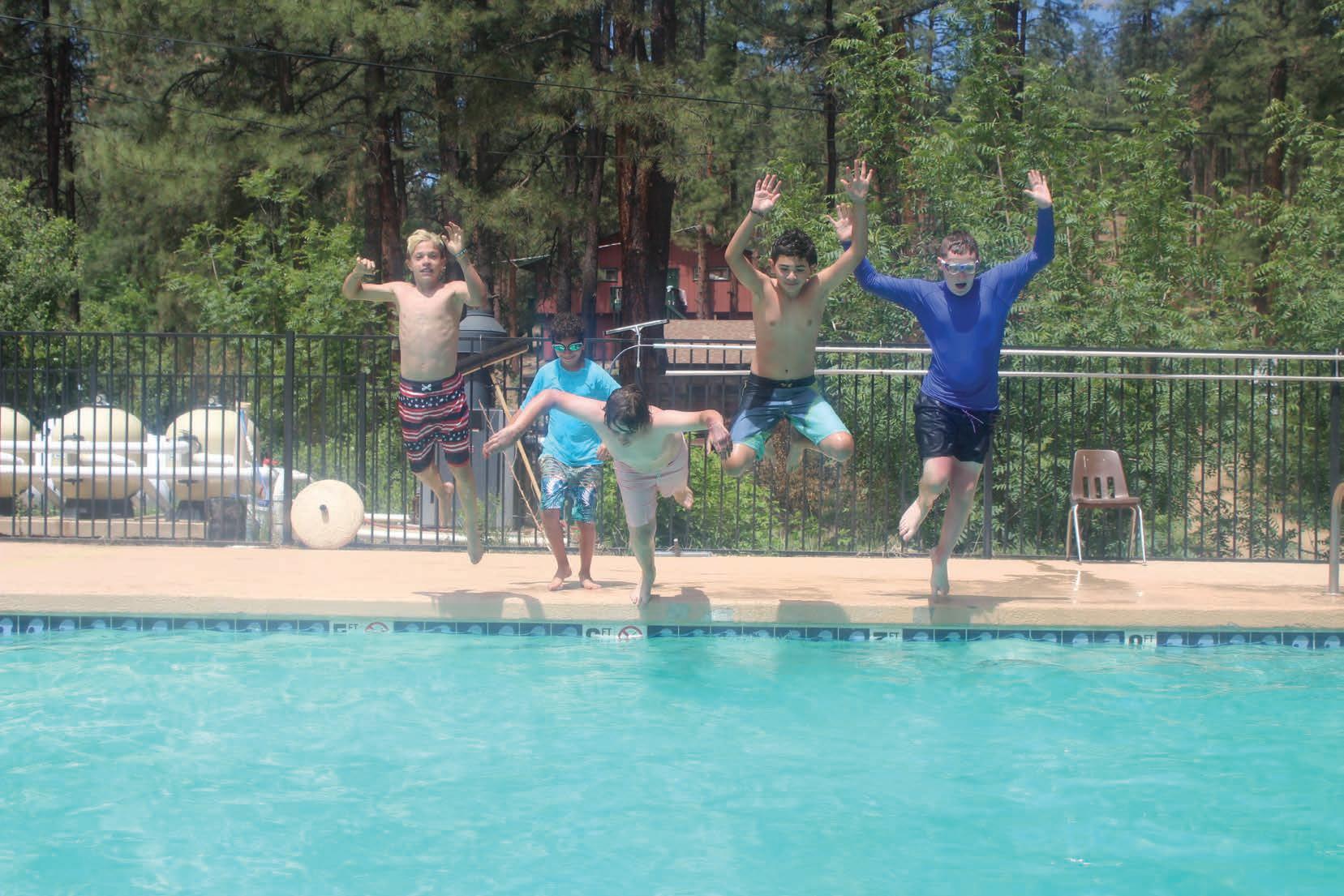
“I’ve never worked with a Jewish camp that isn’t willing to work with people,” said Fischman. “We want kids to experience the amazing things kids get from Jewish camps. For instance, there is a program called One Happy Camper that is available for all families sending their children to Jewish camp for the first time and it gives discounts of $700-$1000. It’s a wonderful resource.”
Fischman added, “The benefits of camp are endless, but especially in our techdriven society today, the mental health benefits of camp, community and being outdoors are priceless.” JN

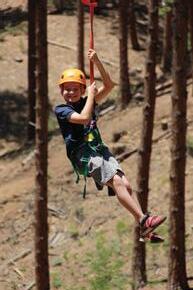
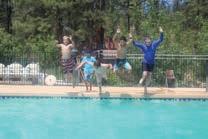
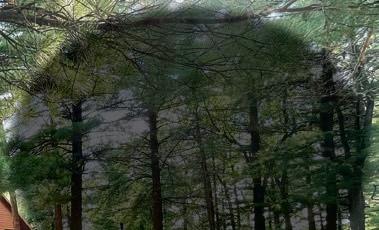
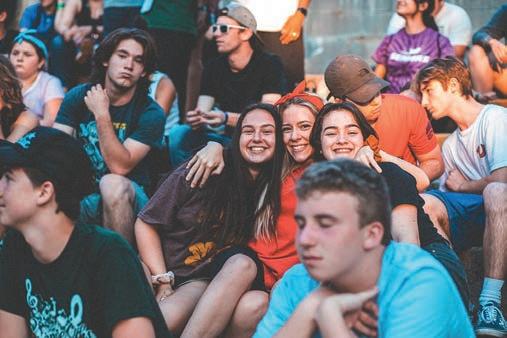 MICHAEL VYSKOCIL
MICHAEL VYSKOCIL
We often associate summer camp with young children, but as kids grow up, we may forget that they need some of the same experiences they enjoyed when they were younger. Maybe you think your teen doesn’t need summer camp. After all, shouldn’t your son or daughter be mowing lawns or lifeguarding at the pool? Your teen can still do these activities and enjoy a week away for summer fun and learning.
Discover the following six advantages of sending your teen to summer camp.


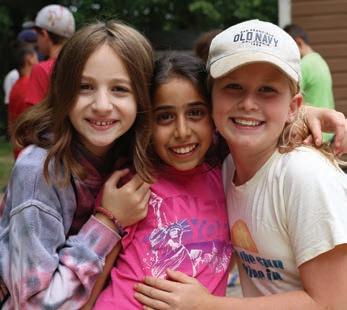
1. Teens can learn about giving back.
Camps that promote community-service opportunities provide a great way for teens to make a difference and give back to their community. At the same time, they’ll be learning skills that they can carry with them throughout life. Maybe your teen will get to pack boxes at the food bank or clean up a park or playground.
2. Teens can make new friends. Summer camp often brings together individuals from different backgrounds and places. Making new friends can enrich your teen’s life by exposing your child to new perspectives and new life experiences. Some teens who are camp regulars always attend the same summer camp together every year, fostering familiarity and solidarity. Attending a new camp can be a great experience for your teens.
3. Teens can discover a new hobby.

When your teen unplugs from the screens at camp, he or she may discover a hobby to pursue and nurture throughout the year. Today, parents can find a camp for almost any type of activity or hobby, from art and music camp to Scouts and sports camps.

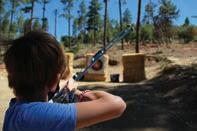
4. Teens can stay active. Are you concerned that your teen would spend all summer glued to the computer and smartphone screens? When your teen
attends summer camp, he or she can power off the laptops and put down the phones. Unplugged from the electronics, your teen will be able to hike, paddleboard, swim and enjoy being outdoors in nature.
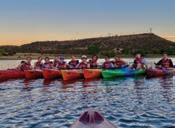


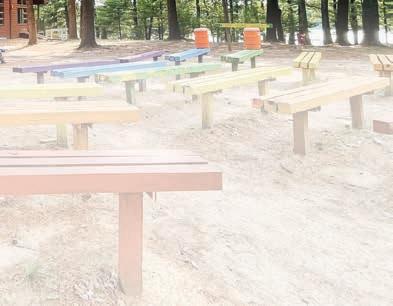

5. Teens can begin to cultivate leadership development skills. Whether it’s serving as section leader at band camp or organizing a squad’s activity, summer camp gives your teen the opportunity to cultivate leadership development skills. Through the camp experience, your teen can learn to take ownership of responsibilities, work with diverse groups of people and problem solve through challenges.
6. Teens learn to appreciate things they would probably take for granted. When teens are outside their home comfort zones and going to camp by
themselves, they’ll come home with a new appreciation for what it takes to be a part of a family and contribute to a household. As such, they’ll learn to appreciate the things they would probably take for granted at their homes, such as a refrigerator with food and a comfortable bed.

Sending teens to summer camp offers the above benefits and more to them. Give your teen an opportunity to get away for summer camp, and you’ll give your child an opportunity to grow and develop as an individual.
Michael Vyskocil is the lifestyle editor at Baltimore Style and Baltimore’s Child magazines – Jewish News-affiliated publications. This piece first appeared in MetroKids – a Jewish News-affiliated publication.
Located in central Wisconsin, Camp Young Judaea Midwest is a coed Jewish overnight camp for children in grades 2-9. Our beautiful 80-acre lakefront property o ers the opportunity to explore and make friendships that last a lifetime. Our premier programming features water skiing & tubing, archery, a high ropes course and thrilling zip line, mountain biking, drama, maker’s space, camping, field trips, and much more!
Our community consists of campers who come from Jewish day schools in big cities and public schools in small towns. Some rarely see the inside of a synagogue and others go to shul regularly. Campers come from over 20 states, including Arizona, and abroad in France, Israel, and Mexico join our family of 130 campers per session. New camp families can save $150 on tuition by using the code ‘experiencecyj’. Scholarship is available.


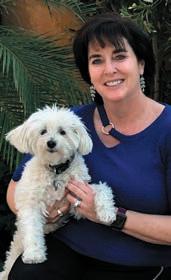
When you moved into your house years ago, you promised yourself you’d update the place. But like most homeowners, the longer you live there, the less you notice the 40-year-old light fixtures, the wallpaper from the 1970s and the sunken living room.
Even if you feel comfortable in your current home, you could have some big problems when it comes time to sell. Here are five fixes you may have to make and some suggestions on how they can be repaired.
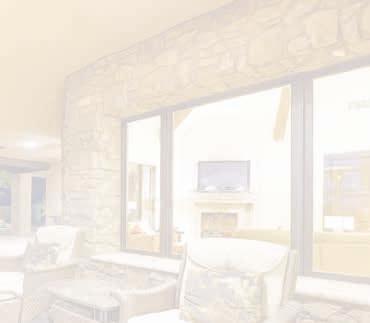
1. Fill in the sunken living room.
Sunken living rooms were all the rage in the 1950s and 1960s; to some extent, they are popular today with some folks. But they do present some problems. Most of them take up a whole living space that can be a step down from 6 to 8 inches from another room. That can be a hazard for aging baby boomers and small children.
But you can raise the level of the floor to fill in the sunken room. After you empty the living room of furniture and remove any flooring covering the concrete slab, have a termite inspection. Get the area treated for termites to avoid future problems. Then remove all the wood pieces surrounding the old floor, including baseboards and stairs.

A contractor may be needed to adjust some things in the surrounding walls, like raising electrical outlets and switches. Workers will then bring in the aggregate base course and new concrete to fill the sunken area. The new concrete can sometimes be pumped in, depending on the distance from the street where the concrete truck will be and your living room.
“You want to match the new subfloor’s height to that
of the subfloor in the adjoining room. You may also have to match the flooring in both areas – like tiles that run through the living room into a hallway. You can stay in the house while all this is going on,” says Don Brees, project manager, Rosie Right - Design. Build. Remodel. “But it’s going to be slightly humid for the next couple of weeks because of the wet concrete that was placed there.”
2. Replace the fluorescent lights with recessed can lights.
Maybe a box was built into the ceiling over your kitchen or bathroom and was covered with sheets of plastic. Behind the plastic, a builder hung fluorescent lights. Now you’d like to switch to individual recessed can lights. You shouldn’t just build the can lights into the empty box as they would cast unsightly shadows. In a case like that, you need to do some electrical work and insulation to provide connections for new lighting. You also need to install new sheetrock to create a level ceiling. If you’re just removing a fluorescent fixture that’s on top of a level ceiling, you only need to remove the old fixture and rewire and insulate for the can lights. Some painting will have to be done in both cases.
3. Replace the original toilets even if you don’t remodel the room itself.

A 20 to 30-year-old toilet will be less efficient than newer models. Modern toilets use significantly less water and a new one can enhance the appearance of a bathroom. They come in many different shapes. If you choose a new one that is smaller and shaped
differently, you might have to change the flooring to fit the new fixture.
4. Replace all the shiny brass or brasscolored hardware on doors and cabinets. That gleaming brass went out of style some time ago because we overdid it with brass everywhere in our houses in the 1980s. Antique brass is popular now, and so are pewter, chrome and brushed nickel. This is another do-it-yourself project that could take a while, but once it’s done, you’ll be amazed at the change in the house. While you’re at it, change the lighting chandeliers to match the new metal.
5. Turn your carport into a garage. You can’t just put up walls on a slab under your wide-open 1950s era carport or you could have flooding problems in the next big storm. Your ROC-licensed contractor must build up a masonry stem wall that is about 6 to 8 inches high around the perimeter of the concrete slab of the carport/garage. A concrete block system can be used to do this, but don’t skip this step. If you use wood instead of masonry for the stem wall, you can end up with mildew, dry rot and termites. For a wood wall construction, a series of 2-inch by 4-inch plates, studs and bearing posts need to be tightly installed on top of the stem wall to support the roof and walls.

Take on these projects now so you can enjoy the improvements before you sell your home. JN




 MALA BLOMQUIST | MANAGING EDITOR
MALA BLOMQUIST | MANAGING EDITOR

In the heart of Old Town Scottsdale, Buffalo Collection showcases Native American-inspired fine art, museum-quality collectibles and American Buffalo leather furnishings in its more than 3,000 square feet of combined showroom and gallery space.
Buffalo Collection originated in Hotchkiss, Colo., at the Scenic Mesa Ranch. In the late 1990s, as part of a land restoration project, a herd of 300 bison were placed on an overgrazed cattle ranch to bring back the native grasses. After the number of bison grew too large to be sustained by the land, a meat business was started and the hides were tanned and stored. A fourth-generation furniture builder’s visit to the ranch sparked the development of a furniture business and before long, the first Buffalo Collection showroom opened in Aspen.
Celebrating its 10th anniversary in Scottsdale, owners Michael and Laura Levenberg opened their art and furniture gallery on the corner of Fifth Ave. and Goldwater Blvd. in January 2012. The Jewish couple are members of Local Arizona, supporting local businesses and ASID, the American Society of Interior Designers.

According to the press release, “Since opening their doors, the Levenbergs have amassed a carefully curated collection that celebrates the spirit of the American West. With exclusive fine art by
world-renowned contemporary artists like Robert Rivera and Dan Deuter, as well as historically significant pieces, their gallery beautifully blends the Old West with the modern world. The exquisite furniture pieces are works of art in their own right, offering ultimate comfort and timeless design. Sustainably crafted from richly finished hardwoods and sumptuous American Buffalo Leather, these sofas and chairs are available in a wide variety of design styles and leather colors.”
In December 2021, the Levenbergs expanded the Buffalo Collection brand to include Buffalo Boutique, a specialty shop dedicated to Western and Native American-inspired fashion, fine jewelry and home décor. Buffalo Boutique is located just steps from the art and furniture gallery at 7032 E. Fifth Ave.
In the press release, the Levenbergs stated they “are profoundly grateful to the community for supporting their collection over the last 10 years.” The anniversary celebration will continue throughout 2022 and culminate in an evening of “mingling and merriment” at the annual Buffalo Bash extravaganza. Initially slated for January, the event will take place when the current COVID surge subsides and the situation allows. JN


For more information, contact sales@buffalocollection or visit buffalocollection.com.
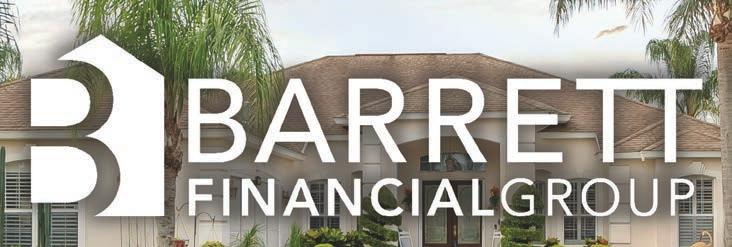

SUNDAY, FEB. 27
CBI Centennial Concert Celebration:
4:30 p.m. A historic concert of the Psalms by the musical leadership and choral programs of Pilgrim Rest Baptist Church, Mountain View Presbyterian Church and Congregation Beth Israel. The event will be at The Madison Center for the Arts, 5601 N. 16th St., Phoenix. Cost: Starting at $36. To register, visit www.ticketmaster.com/event/19005B89D2A61EC4. This event will also be livestreamed.
Cantor Seth EttingerTHROUGH FEB. 27
Greater Phoenix Jewish Film Festival: The 26th Annual Greater Phoenix Jewish Film Festival will screen films showcasing the best of Jewish life, history and heritage. Due to ongoing health and safety concerns, the film festival will once again be held virtually. Viewers will have 3 days to watch each film, with the ability to pause, rewind and even switch devices within the home. Cost: Starting at $13. For more information and to register, visit gpjff.org.
SUNDAY, FEB. 20
Rural Street Klezmer Band: 1:30 p.m. Join Temple Beth Shalom of the West Valley for a concert of Jewish soul music performed by the Rural Street Klezmer Band. Tickets are $10 for members and $15 for non-members; children under 10 are free. Tickets will be available at the event. Seating is outdoors and COVID compliant. RSVP is requested as seating is limited. Contact Temple Beth Shalom at templebethshalomaz@gmail.com for reservations.
Klezmer Fest: 5 p.m. Join the East Valley Jewish Community Center for live virtual concert featuring Naqshon’s Leap, live from Royal Studios in Memphis, as well as a Q&A with the artists. Free. For more information, visit evjcc.org/ klezmer2022.
WEDNESDAY, FEB. 23
Arizona Educators Symposium on Israel: 5-8 p.m. Join the Israeli-American Council for a teacher training with top-notch experts on Israel. Educators will have the opportunity to learn about Israel and its contribution to science, technology and innovation. This program is complimentary to all educators in Arizona. A certificate of participation will be given to participants that can help with obtaining professional development accreditation. The event is in-person and will be following strict health protocols. For more information and to register, visit iac360.org/event/ arizona-educators/.
SUNDAY, FEB. 27
Rachael Cerrotti: We Share the Same Sky: 3 p.m. Join Rachael Cerrotti, award-winning author, photographer, educator and audio producer for this opening event for the “Holocaust by Bullets” exhibit at Arizona State University’s Hayden Library, 300 E. Orange St., Tempe. Presented by Phoenix Holocaust Association and SHPRS. The “Holocaust by Bullets” exhibit will run from Feb. 27 through April 8 at the library. For more information, visit holocaustbybulletsphoenix.com.
MONDAY, FEB. 28
Holocaust Educator Conference: 4:30-9 pm.
Sponsored by the Bureau of Jewish Education of Greater Phoenix in cooperation with Phoenix Holocaust Association and Arizona State University, teachers are invited to participate in
this free conference. Keynote speakers will be author and award-winning podcast host, Rachael Cerrotti and Grant Gochin, author, diplomat and chair of the Maceva Project in Lithuania. The conference will be at the Hayden Library at ASU in Tempe. For more information, visit phxha. com/events/the-2022-holocaust-educatorconference/ or email jewished@bjephoenix.org.
TUESDAY, MARCH. 8
Blood Drive: 8 a.m.-1 p.m. The Blood Mobile will be parked in Temple Kol Ami’s parking lot for the duration of the drive. All COVID protocols will be in place. Check in at the Blood Mobile when you arrive for your appointment. For information or to register, contact Susan Guzman at 480-335-8853 or sutyguz@gmail.com.
THURSDAY, MARCH. 10
50+ Happy Hour Dinner: 5:30 p.m. Join Temple Kol Ami to re-connect, interact and socialize with people just like you (or with people not just like you) that make you laugh, make you think and make you enjoy being out and socializing. It’s time! This in-person event will be held outside on the TKA patio. Coffee, lemonade, soda and water will be provided. BYO wine & beer – and some to share! $18 per person, no refunds. Call 480-951-9660 or email Nancy Drapin for more information.
MONDAY, MARCH. 14
J Movie Club: 1-3 p.m. Join the Martin Pear Jewish Community Center, 12701 N. Scottsdale Rd., Scottsdale, to watch “Carl Laemmle,” a documentary about Carl Laemmle, the GermanJewish immigrant who founded Universal Pictures, and saved over 300 Jewish families from Nazi Germany. Cost: $7 for members, $10 for guests. For more information and to register, visit apm.activecommunities.com/valleyofthesunjcc/ Activity_Search/1992.
SUNDAY, MARCH 27
Antisemitism Here and Now: 7 p.m. Join Congregation Beth Tefillah, 6529 E. Shea Blvd., Scottsdale, for a presentation by StandWithUS co-founder and CEO Roz Rothstein and the director of SWY’s Center for Combating Antisemitism, Carly Gammill. Cost: Free. RSVP by March 23 at swuandtbt.paperform.co.
SUNDAYS
BAGELS: 9-11 a.m. Join the Martin Pear JCC, 12701 N. Scottsdale Rd., Scottsdale, for Bagels And Gabbing Every Last Sunday of the month in-person. Grab a bagel and a cup of coffee and enjoy some time with your friends and make new ones. You must register to attend. Bagels and coffee will be provided. Cost: Free for members, $5 for guests. For more information and to register, visit apm.activecommunities.com/ valleyofthesunjcc/Activity_Search/1787.
MONDAYS Mahjong: 10 a.m.-12:30 p.m. Join the East Valley Jewish Community Center in-person on Mondays for mahjong. This program is intended for players
TUESDAY, FEB. 22
Author at the J: ‘OK Little Bird’ author Deena Goldstein: 10-11 a.m., Join the East Valley Jewish Community Center for Tuesdays at the J virtual presentation featuring author Deena Goldstein. Free. Register for link at evjcc.org/event/ tuesdays-at-the-j-6/2022-02-22.
MONDAYS
Ethics of Our Fathers: 7 p.m. Learn with Rabbi Zalman Levertov online. Tune in at: bit. ly/2Y0wdgv. Cost: Free. For more information, visit chabadaz.com.
Quotable Quotes by our Sages: 7 p.m. Learn with Rabbi Shlomy Levertov online. Tune in at: JewishParadiseValley.com/class. Cost: Free. For more information, visit chabadaz.com. Learning to Trust in God: 7:30 p.m. Learn with Rabbi Yossi Friedman online. Tune in at: ChabadAZ.com/ LiveClass. Cost: Free. For more information, visit chabadaz.com.
Partners in Torah: 7:30 p.m. Join a growing group of inspired learners with Project Inspire. Cost: Free. Tune in at: us04web.zoom. us/j/3940479736#success, password is 613. For more information, email Robin Meyerson at robin@projectinspireaz.com.
Torah & Tea: 7:30 p.m. Learn with Rabbi Yossie Shemtov online. Cost: Free. For more information, visit Facebook.com/ChabadTucson.
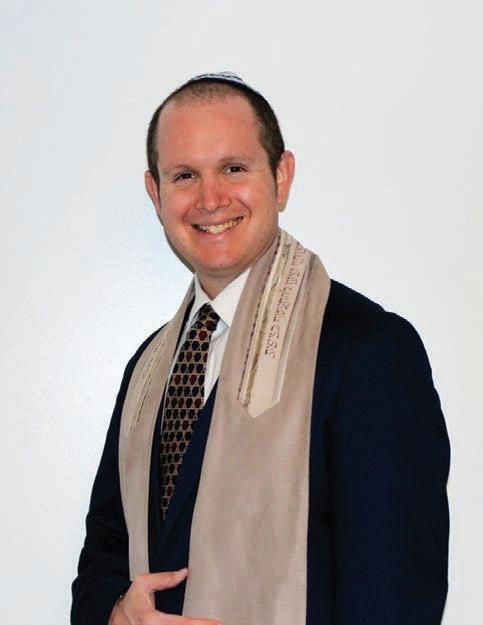
TUESDAYS
Let’s Knit: 1:30-3:30 p.m. Share the pleasure of knitting, crocheting, etc. and help others with a project or pattern. Can’t knit? We can teach you! Every level welcome. We will be sitting outside at the Ina Levine Jewish Community Campus and social distancing. Our last meeting before August will be Tuesday, May 11. Cost: Free. For more information, email Nicole Garber at nicoleg@mpjcc.org.
Keep Calm and Play Mahjong: 6:30-8:30 p.m. Play mahjong from home with myjongg.net. Cost: Free. To join a table, email Nicole at nicoleg@vosjcc.org.
Maintaining an Upbeat Attitude: 7 p.m. A class exclusively for people in their 20s and 30s, learn how Jewish Mysticism can help with your attitude with Rabbi Shlomy Levertov online. Cost: Free. Tune in at: JewishParadiseValley.com/YJPclass. For more information, visit chabadaz.com.
WEDNESDAYS History of the Jews: 11:00 a.m. Learn the Jewish journey from Genesis to Moshiach online with Rabbi Ephraim Zimmerman. Cost: Free. Tune in here: zoom.us/j/736434666. For more information, visit chabadaz.com.
Torah Study with Temple Beth Shalom of the West Valley: 11 a.m.-noon. TBS of the West Valley’s weekly virtual study group explores that week’s portion and studies different perspectives and debates the merits of various arguments. Intended for adults, Torah study is open to students of all levels. The goal is to achieve an understanding of what the text is and what it can teach us in the contemporary world. For more information, contact the TBS office at 623-977-3240.
Happiness Hour: 11:30 a.m. An online class taught by Rabbi Pinchas Allouche that delves into texts and references culled from our traditions to address a relevant topic and draw uplifting life lessons from it. For more information or to join, visit cbtvirtualworld.com.
Torah Study with Chabad: Noon. Take a weekly journey to the soul of Torah online with Rabbi Yossi Levertov. Cost: Free. For more information, visit chabadaz.com.
Lunch & Learn: 12:15 p.m. Grab some food and learn online with Rabbi Yehuda Ceitlin. Cost: Free. Tune in on Zoom by emailing info@ChabadTucson.com. For more information, visit ChabadTucson.com.
The Thirteen Petalled Rose: 1 p.m. An online Kabbalah class that studies “The Thirteen Petalled Rose” by Rabbi Adin Even-Israel Steinsaltz, focusing on the many foundational and transformational concepts of Kaballah and Jewish Mysticism and applying them to everyday life. For more information or to join, visit cbtvirtualworld.com.
Knit a Mitzvah: 1-3 p.m. On the second and fourth Wednesdays of the month, check in with fellow knitters who are making items to donate as part of this Brandeis National Committee Phoenix chapter study group. For more information, contact Ronee Siegel at ronees@aol.com.
JACS: 7:30-8:30 p.m. Virtual support group for Jewish alcoholics, addicts and their friends and family on the first and third Wednesdays of the month. Cost: Free. For more information, email jacsarizona@gmail.com or call 602-692-1004.
Words & Whiskey: 8:30 p.m. Join a free weekly, virtual learning session for men. To RSVP, email rmollenaz@gmail.com or call/text 310-709-3901.
THURSDAYS
Ladies Torah & Tea: 10:30 a.m. Learn about the women of the Torah with Mrs. Leah Levertov online. Cost: Free. Tune in at: ourjewishcenter. com/virtual. For more information, visit chabadaz.com.
Talmud - Maakos: 11 a.m. Learn with Rabbi Shlomy Levertov. Cost: Free. Tune in at: JewishParadiseValley.com/YJPclass. For more information, visit chabadaz.com.
Mindfulness Gatherings: Noon. Hosted by Hospice of the Valley via Zoom. Cost: Free. To join by phone dial 1-253-215-8782, meeting ID 486 920 2119#, to get the Zoom link or for further questions contact Gill Hamilton at ghamilton@hov.org or 602-748-3692.
Jewish Life and Tradition: 1 p.m. Rabbi Laibel Bloter will be returning for a new series called Jewish Life and Tradition. The first class is on Tuesday, May 25 at 1 pm and will continue on each fourth Tuesday of the month.
The Science of Everything: 4 p.m. Explore the most fundamental work of Chassidut: the Tanya, with Rabbi Boruch. Cost: Free. Tune in at: zoom. us/j/736434666. For more information, visit chabadaz.com.
Teen Discussions: 7-8:30 p.m. Learn with Rabbi Tzvi Rimler online, Cost: Free. Tune in at cteen.clickmeeting.com/east-valley. For more information, visit chabadaz.com.
SATURDAYS
Saturday Mindfulness Gatherings: 9:30 a.m. Hosted by Hospice of the Valley. To join by phone dial 1-253-215-8782, meeting ID 486 920 2119#. To get the Zoom link or for more information, contact Gill Hamilton at ghamilton@hov.org or 602-748-3692.

Book Discussion: 1:30-2:30 p.m. Join Or Adam Congregation for Humanistic Judaism on the third Saturday of every month for a virtual book discussion. For more information and to register, contact oradaminfo@gmail.com.
SUNDAYS
Soul Study: 7:15 a.m. An online class exploring the secrets of the Tanya and Jewish mysticism, taught by Rabbi Pinchas Allouche. Cost: Free.
Chassidus Class: 9 a.m. Learn about the Chasidic movement with Rabbi Yossi Friedman. Cost: Free. Tune in using this link: ChabadAZ.com/LiveClass. For more information, visit chabadaz.com.
Anxiety in the Modern World: 6 p.m. Learn the secrets of the Torah for living stress-free in the current environment in a virtual class with Rabbi Boruch, with Chabad of Oro Valley. Cost: Free. Tune in using this link: zoom.us/j/736434666. For more information, visit chabadaz.com.
FRIDAYS
In-person services: Congregation Beth Israel is holding services in the Goldsmith Sanctuary limited to 100 people, excluding clergy and staff. Members and guests must be fully vaccinated (two weeks since your last vaccination) and wear a mask. Children may attend and must be able to wear a mask for the duration of the service.
Participants must pre-register by Thursday at 5 p.m. Priority will be given to members first and then guests. If there are more requests than available seats a lottery system will be used. To make your reservation, contact Gail Gilmartin at 480-951-0323 or at ggilmartin@cbiaz.org.



In-person services: Beth El Phoenix is offering in-person Shabbat services indoors, limited to 30 people, not including clergy. Masks and social distancing required as well as pre-registration via bethelphoenix.com/form/Shabbat-registration or by calling the office at 602-944-3359.
In-person services: Congregation Or Tzion is holding Friday evening (6:00 p.m.) and Shabbat morning (9:30 am) Services indoors. Beginning March 4, proof of full vaccination will be required for all events in the synagogue. Masks are required for everyone attending services at Or Tzion. Services are also live streamed at otaz.org/livestream. For more information about services, events, membership and our new COVID policy, please visit congregationortzion.org or call 480-342-8858.
Tot Shabbat in the Park: 9:30 a.m. Free totShabbat every Friday morning at Cactus Park. Shabbat music, toys and a meaningful preschool Shabbat experience. Is it your child’s birthday? Sponsor a Shabbat for $36.00. For more information and to register, visit playdatesbydesign.com/upcoming-classes.
Shabbat at Beth El: 11-11:45 a.m. Celebrate Shabbat with songs, blessings and inspirational teachings. Rabbi Stein Kokin from Beth El Congregation will lead us the first Friday of every month. Special guests will be welcoming Shabbat during the remainder of the month. For more information or to join, visit bethelphoenix.com.
Welcome Shabbat: 11-11:45 a.m. Join the JFCS Virtual Center for Senior Enrichment each Friday for a soothing and inspiring program to welcome Shabbat. Each week a different guest host will lead the program with song and celebration. Cost: Free. For more information, visit jfcsaz.org/cse.
Erev Shabbat Service: 5:30 p.m. Rabbi Alicia Magal will lead a service livestreamed for members of the Jewish Community of Sedona and the Verde Valley. Cost: Free. For more information and to obtain the Zoom link, visit jcsvv.org/contact.
Kabbalat Shabbat: 5:30 p.m. Congregation Kehillah invites you to join services via Zoom, every other Friday, with Rabbi Bonnie Sharfman and cantorial soloists Scott Leader and Erica Erman. For the dates, visit congregationkehillah. org/events and to register and receive the link, please email, info@congregationkehillah.org.
Pre-Shabbat Kiddush Club: 6 p.m. Say kiddush with Rabbi Mendy Levertov online. Cost: Free. Tune in here: ourjewishcenter.com/virtual. For more information, visit chabadaz.com.
Third Friday Shabbat: 7- 8 p.m. The Desert Foothills Jewish Community Association hosts a virtual abbreviated Shabbat service followed by a program. Contact Andrea at 480-664-8847 for more information.
MONDAYS
Featured Presentation: 12:30 p.m. Join Smile on Seniors Mondays and Wednesdays to learn from a variety of presenters about topical issues, like Q&As with medical professionals, entertainers and lectures. Cost: Free. For full details visit sosaz.org/virtual or email Rabbi Levi Levertov at levi@sosaz.org.
TUESDAYS
Movie Discussion Group: 11 a.m. Join Smile on Seniors on the third Tuesday of every month hosted by Issy Lifshitz. Cost: Free. For full details and the movie of the month visit sosaz.org/virtual or email Rabbi Levi Levertov at levi@sosaz.org.
WEDNESDAYS
Chair Yoga with Zoe: 11-11:45 a.m. Grab a chair and sit down for a 45-minute chair yoga class with Zoe! Prior to class, please let Zoe know if you have any limitations in order for exercises to be modified. Free. Presented by JFCS Center for Senior Enrichment. Cost: Free. For more information, visit jfcsaz.org/cse.
THURSDAYS
In the Kitchen with Benita: 12:30 p.m. Join Smile on Seniors on the fourth Thursday of every month for some delicious cooking or baking fun! Cost: Free. For full details visit sosaz.org/virtual or email Rabbi Levi Levertov at levi@sosaz.org.
FRIDAYS
Welcome Shabbat: 11-11:45 a.m. Celebrate Shabbat virtually with songs, blessings and inspirational teachings. For more information and to register, visit jfcsaz.org/events/. Contact CSE Director Jennifer Brauner at seniorcenter@jfcsaz.org or 602-343-0192 with questions. JN
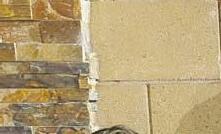


On Jan. 30, Temple Solel’s Raker Religious School had a hike at Cave Creek Regional Park for parents and students. About 140 participants enjoyed playing tag, singing and hiking. The event ended with lunch and a closing circle. The madrichim (student leaders) led interactive activities to engender conversations about bullying and encourage kind speech and actions.



Zadel Strichartz, left, and Linda Lober joined Smile on Seniors on Jan. 30 for a cooking class presented by baker Miriam Litzman, who shared her babkamaking secrets.
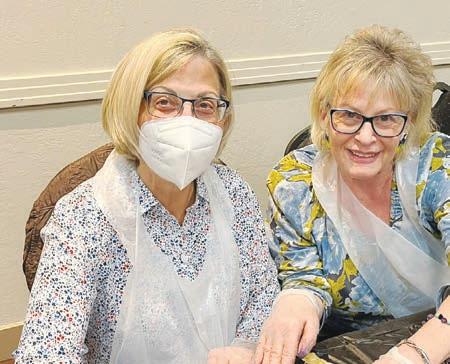
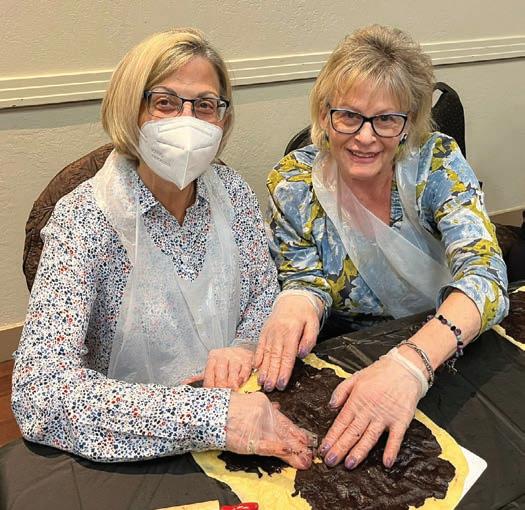
COURTESY SMILE ON SENIORS
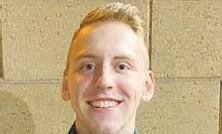


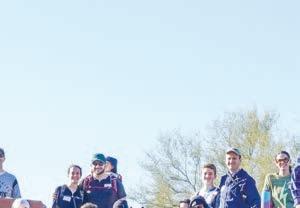


Smile on Seniors hosted their monthly Shabbat dinner in January at the Chabad Center in Phoenix. Pictured from left to right, Marvin Kline, Janice Teisch, Herb Spiwak, Ethel Schmall, Bella Kazen and Berle Clark. COURTESY SMILE ON SENIORS
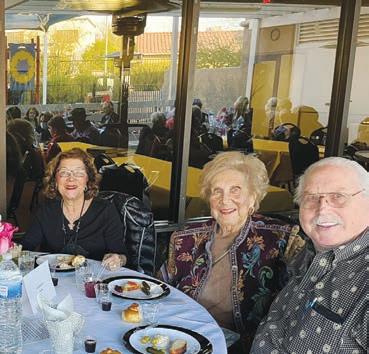

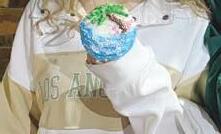


On Feb. 8, Levenbaum Chabad House at ASU hosted a “Cupcake Wars” night where students decorated cupcakes and were judged for best cupcakes in a few categories. The winners are, left to right, Esther Weiss, Jared Blumer and Rachel Hayward.

COURTESY CHABAD AT ASU





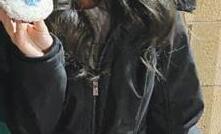






The Levenbaum Chabad House at ASU hosted a “Welcome Back ChaBBQ” in January to celebrate the start of the new semester. Pictured, from left to right, Bella Schneider, Brendan Moffitt, Max Prushan and Maya August.
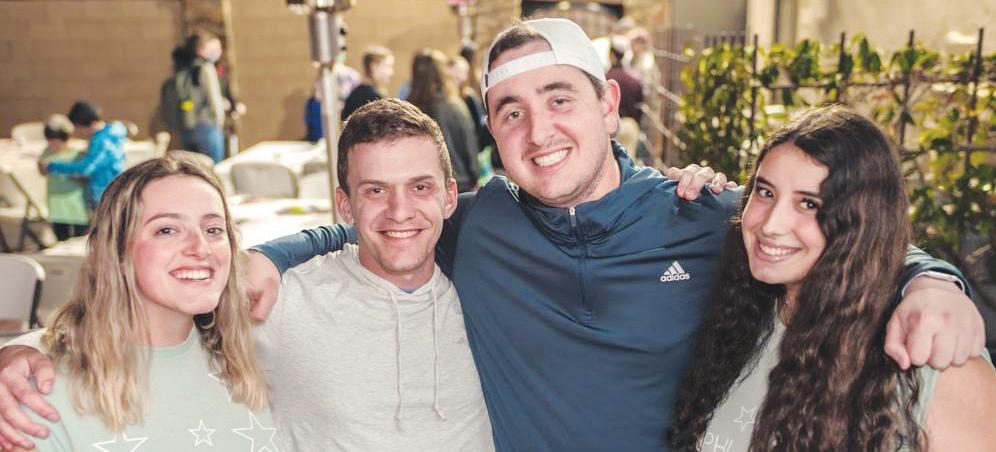
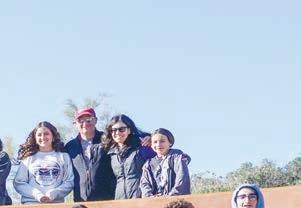
COURTESY CHABAD AT ASU
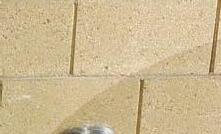


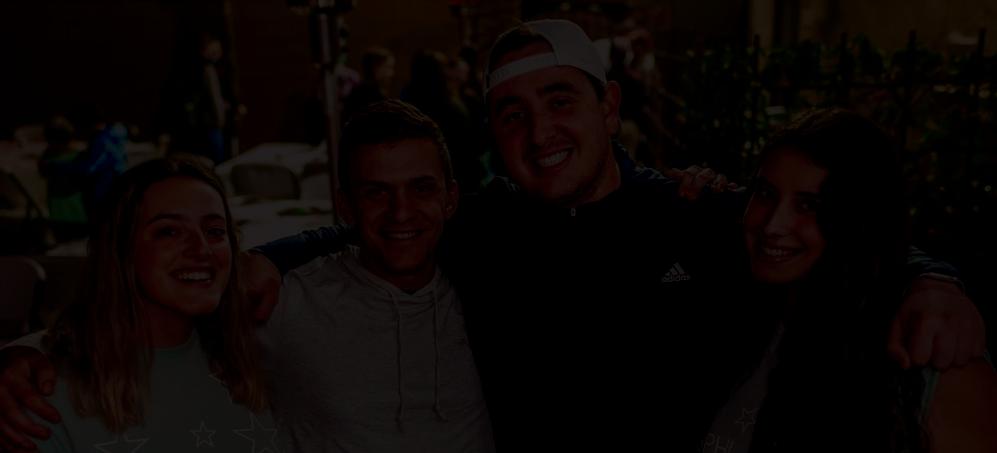

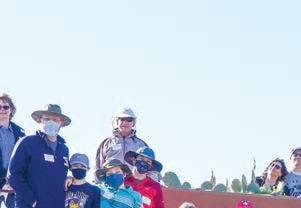
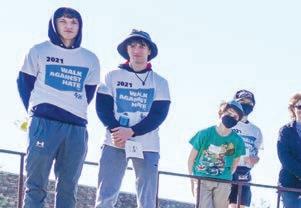
This COMMUNITY page features photos of community members around the Valley and the world. Submit photos and details each week to editor@jewishaz.com by 10 a.m. Monday.

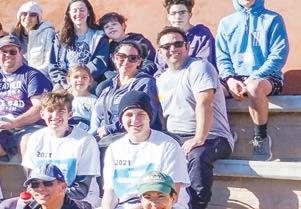

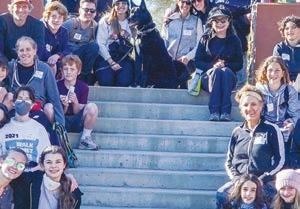
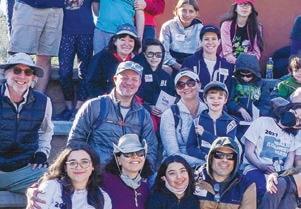
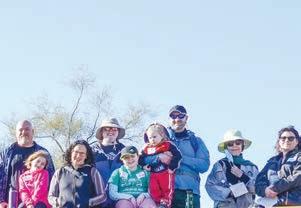
the late Julio Contreras of San Salvador, El Salvador; and the late Audrey and Lydell Kahn. For her mitzvah project, Lexi organized volunteer groups to work at the Arizona Kosher Pantry, where they packed meals for those in need.
A student at ASU Polytechnic STEM Academy, Lexi enjoys writing, spending time with family and friends, going to the movies and training and playing with her dog, Charlie.
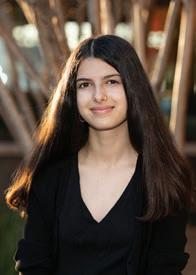
GRANT RUSSELL KATAI
Grant Russell Katai became a bar mitzvah on Feb. 12, 2022 at Congregation Beth Israel.
He is the son of Carrie and Daniel Katai of Cave Creek. Grandparents are James Gaspar and the late Sheila Gaspar of Scottsdale; and Joan and Andrew Katai of Naperville, IL.
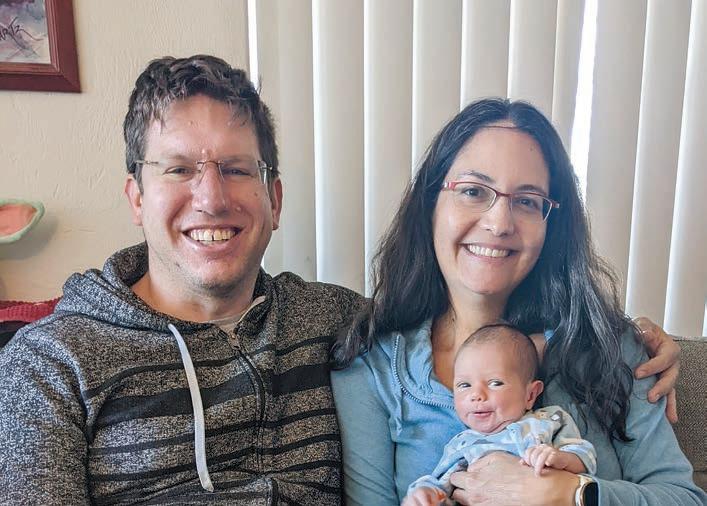
For his mitzvah project, Grant made and collected Valentine’s Day cards to give to homebound seniors through a local organization called Caring Corp.
A student at Sonoran Trails Middle School, Grant enjoys playing a variety of sports such as soccer, football and baseball. However, his current passion is playing tennis. He also has a big heart for animals.
BAR MITZVAH
ELIJAH “ELI” SOLOMON GIMBEL
Elijah “Eli” Solomon
Gimbel will become a bar mitzvah on April 09, 2022 at Congregation Beth Tefillah. He is the son of Candice and Mark Gimbel of Scottsdale.
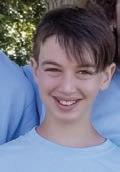

Grandparents are Renee and Irving Levine of Bal Harbor, FL; Penny Gimbel of Scottsdale: and Marilyn and Joseph Gimbel of Paradise Valley.
For his mitzvah project, Eli built and stocked a Little Free Library (LFL) in collaboration with Southwest Human Development (SWHD). In 2021, Eli recruited his fellow Webelos Cub Scouts, Connor and Wyatt, to help him with this project and they collected hundreds of books and painted the library before installation. SWHD identified Title 1 School Desert Star in Goodyear as being in need. Eli enjoyed visiting the LFL onsite at Desert Star. The students appreciated the book resource, especially over the course of the pandemic shutdowns.
A student at Rancho Solano Preparatory School, Eli enjoys reading, biking, karate, drawing, scouting and volleyball.
Jacob Kahlil Wolf was born on January 30, 2022. He is the son of Bonnie Wolf and Frank Harris of Tucson. Grandparents are Marie and William Wolf of Phoenix; and the late Najwa Ghanaim Harris of Tucson.
OBITUARY
PHILIP LEVY
Philip Levy of Phoenix died Jan. 28, 2022. He was 88.
A Korean War Air Force Veteran, Philip is survived by a daughter, Lisa and two sons, Alan and Kevin, as well as a sister, Rae Thilo and two grandchildren. Services were held at National Memorial Cemetery on Feb. 8, officiated by Rabbi Jeremy Schneider and arranged by Sinai Mortuary of Arizona.
OBITUARY
Harvey R. Jacobs of Anthem died Jan. 29, 2022 at 84. He was born in Paterson, NJ.

He served in the Air Force.
He has long been affiliated with the Masons and Shriners Hospitals for Children.
He is survived by his wife, Susan Jacobs of Anthem; daughters Franki (James) Halsey and Renee (Stephen) Rolfing; son, Kevin Jacobs; sister, Judith (David) Mellon; brother, Steven Jacobs; three grandchildren and one great-grandchild.
Services were held Feb. 6 at Mt. Sinai Cemetery through Sinai Mortuary. Rabbi Sadie Becker will officiate.
OBITUARY
Maurice Travis of Maricopa died Feb. 7, 2022. He was 88.
Maurice is survived by his life partner, Linda Helmer; daughter, Elizabeth Hammel; sons Leonard and Jeffrey Travis; sister, Sarah Marwick, brother, Jack Tschewick; five grandchildren and one great-grandchild. Services were held at Mt. Sinai Cemetery on Feb. 16, officiated by Rabbi Jeremy Schneider and arranged by Sinai Mortuary of Arizona.
OBITUARY
Miriam E. Tick of Scottsdale died Feb. 3, 2022. She was 93.
She has long been affiliated with Hadassah and she was an impactful contributor to Hospice of the Valley.
She was preceded in death by her husband, Louis, and her son, Gregory. Miriam is survived by a brother, Stanley Fishman; daughter, Robin (Richard) Weiner; two grandchildren and four great-grandchildren.

Services were held at Sinai Mortuary on Feb. 6 and officiated by Rabbi Levi Levertov. JN
David Baruch Lorsch of Scottsdale died Feb. 4, 2022. He was 62.
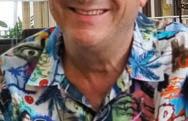
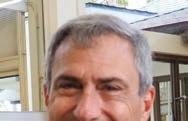
Born in Chicago, IL, David was an entrepreneur, had an incredible sense of humor, and a philanthropic heart. He was the most generous and exceptional man!
David never did small. He had to have the biggest and best of everything. This was a testament to his personality! He wanted to make sure that everyone experienced only the finest!
David met his wife, Cindy, at Club Med and when he flew to Montreal, Canada to ask her to marry him – she could only say yes! In their 32 years of marriage, David and Cindy traveled with their family to all seven continents and made exploring the world a priority. David enjoyed taking bike rides on the greenbelt as a way to disconnect and enjoyed his fair share of comedies, westerns and mafia movies with a glass of Macallan 18.
He was the founder and CEO of DBL Distributing. David, along with Cindy, quickly grew the business and ultimately sold it in 2007 with more than 26,000 customers, and a 1,200-page catalog filled with 18,500 products from more than 400 manufacturers. David was inducted into the Consumer Technology Hall of Fame in 2016. He was an avid participate and member of CTA, volunteering his time to help other entrepreneurs with advice and encouragement.
David was always dressed to the nines. He made sure you heard and saw him when he walked into a room. His favorite game at CES was “Who is wearing the best socks?” David loved sharing his life experiences whether it was as a guest lecturer at ASU, a meeting with a new startup, or over a meal with friends and family (even if you didn’t ask). He loved cracking a good joke, especially when he had a new audience to share it with.
David always made sure his family and friends were well taken care of and never left a stone unturned when someone needed something. He was the person you could always count on to get something done and he didn’t care how much time or money it would take. David made a memory out of every interaction he had! It didn’t matter what he was doing, you came home with a story to tell. He touched the lives of every person he interacted with!
David will be missed by all and will not be forgotten. His memory will live on through his family, extravagant clothing and unbelievable stories! David didn’t miss much!
David is survived by his wife, Cindy Lubin; children Scott and Hillary; his late mother, Renee Lorsch; parents Henry and Sharon Lorsch; mother-in-law Charlotte Lubin and the late Irving Lubin; sisters Gail Lorsch,and Diane (Jamie) Nayhouse; sister-in-law Randy (Eric) Abecassis; brother-in-law Sheldon (Sandy) Lubin.
A celebration of David’s life was held on Tuesday, Feb. 8 at Mt. Sinai Cemetery in Phoenix.
Donations can be made to Jewish Family and Children’s Services (jfcsaz.org/donate/donate-online-now) and HonorHealth Heart and Vascular (honorhealthfoundation.org/donate) in David Lorsch’s honor.
Sally Rosenbloom passed away Jan. 23, 2022. She was 95.
Our hearts are sad because we lost our beloved mother, grandmother and great grandmother. Sally was a strong woman with indomitable spirit; whose resilience and determination to life and her family enabled a long life. She was predeceased by her husband, Bery; son, Morley; parents Raphael and Gitel; step-mother, Rae; and daughter-in-law Olga.
Born Sheindel Mlynarski, on a farm outside of Miechow, Poland, she lived mostly in Sosnowitz. Sally’s happy childhood was shattered with the onslaught of World War II. She survived ghetto life, slave labor camps and Plaszow; and the loss of her mother in Auschwitz. After liberation from Chestokova, she and her father, who had survived Auschwitz and Mauthausen, found each other and together walked to Fehrenvald, a displaced persons camp. Sally met and married Bery there. They immigrated to Winnipeg, Canada in 1948 and began to build a new life.
Sally treasured her time with her family. She is survived by daughter, Judy and son-in-law Mark; grandchildren, Tobi, Dan, Ben, Erin, Jacob, David and Naomi; daughter-in-law, Mary Ann. In addition, she leaves behind four greatgrandchildren, Anne, Ariella, Adira and Marigold.
The family greatly appreciates the caring and compassionate staff of the Simkin Centre and her personal companions. Donations in Sally’s memory may be made to the Jewish National Fund, NA’AMAT, or any Holocaust education program.
Su ering Servants! How to Deal with the Missionary at the Door
Rabba Dr. Lindsey Taylor-Guthartz
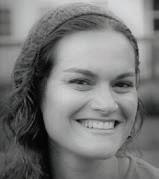

Thursday, Apr 7 @ 11:00 am PT
Devorah the Prophet: A Model of Leadership Irrespective of Gender
Rabbi Dina Najman

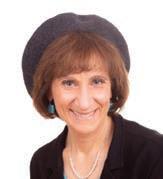
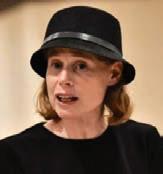
Thursday, May 5 @ 1:00 pm PT
Rabbi Morris Panitz
Wednesday, May 4 @ 1:00 pm PT
Third-Party Peacemakers in Judaism: Text, Theory, and Practice – Book Talk with Rabbi Dr. Daniel Roth

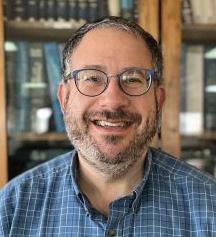

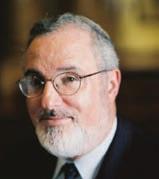
Rabbi Dr. Daniel Roth


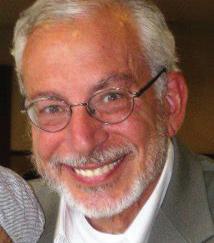

Thursday, June 2 @ 10:00 am PT
Sheri & a Serbian Kabbalist
Jonnie Schnytzer

Tuesday, Feb 22 @ 1:00 pm MT
Is Judaism Woke or Unwoke?
Rabbi Asher Lopatin
Wednesday, Mar 30 @ 1:00 pm PT
White Supremacy and Antisemitism: Lessons from the Capital Attack
Professor Jonathan D. Sarna


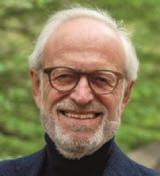
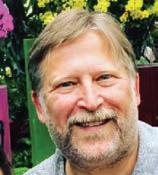
Monday, Apr 11 @ 1:00 pm PT
My journey in science and engineering as a Torah observant Jewish woman
Dr. Rosa Krajmalnik-Brown
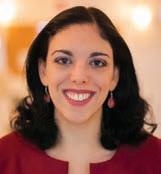
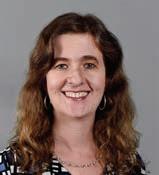
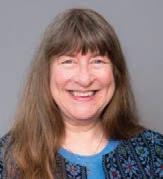
Monday, May 9 @ 1:00 pm PT
Power of the Image: Photographic Thoughts on Torah Values
Shira Hecht-Koller
Wednesday, May 18 @ 1:00 pm PT
Prozbul: Innovative Halachic Change or Gaming the System?
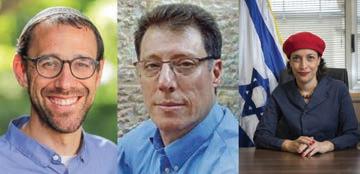
Rabbi Zvi Hirsch eld
Wednesday, June 8 @ 10:00 am PT
The Biblical Plagues and OUR Plague: An Anthropocentric “Theology” and a Lesson for Our Times
Rabbi Chaim Seidler Feller
Tuesday, Apr 12 @ 1:00 pm PT
Shmitta: From Biblical Narratives to Contemporary Perspectives
Rabbi Dr. Avital Hochstein
Wednesday, May 11 @ 10:00 am PT
The Tragedy of Heruta: The Madonna who Became a Whore Gila Fine
Wednesday, May 25 @ 10:00 am PT
Brothers Crying Out from the Ground:The Biblical Origins of Our Divided Society
Dr. Judy Klitsner
Thursday, June 9 @ 10:00 am PT
Living to Die and Dying to Live: lessons from a Mussar Teacher & a Palliative Care Doctor
Dr. Alan Morinis and Dr. Beverly Spring
Wednesday, April 6 @ 1:00 pm PT
To Be a Holy People, Jewish Tradition and Ethical Values

Rabbi Dr. Eugene Korn
Thursday, Apr 28 @ 10:00 am PT
Messianism, Zionism, and Religious Radicalism: Four Spiritualties in Israel
Rabbi Menachem Creditor
Thursday, May 12 @ 1:00 pm PT
King David: Man of War and Politics, Man of God, Man of Contradictions. Based on a close reading of the Books of Samuel
Rabbi Dr. Jeremy Rosen
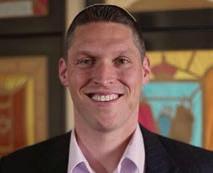
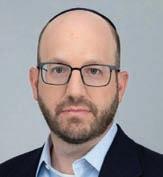


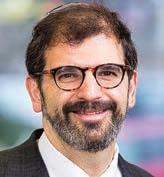

Thursday, May 26 @ 1:00 pm PT
Cain and Abel’s Day In Court: What The World’s First Murder Can Teach Us About Dispensing Justice And Injustice
Rabbi Dan Ornstein
Thursday, June 16 @ 1:00 pm PT
